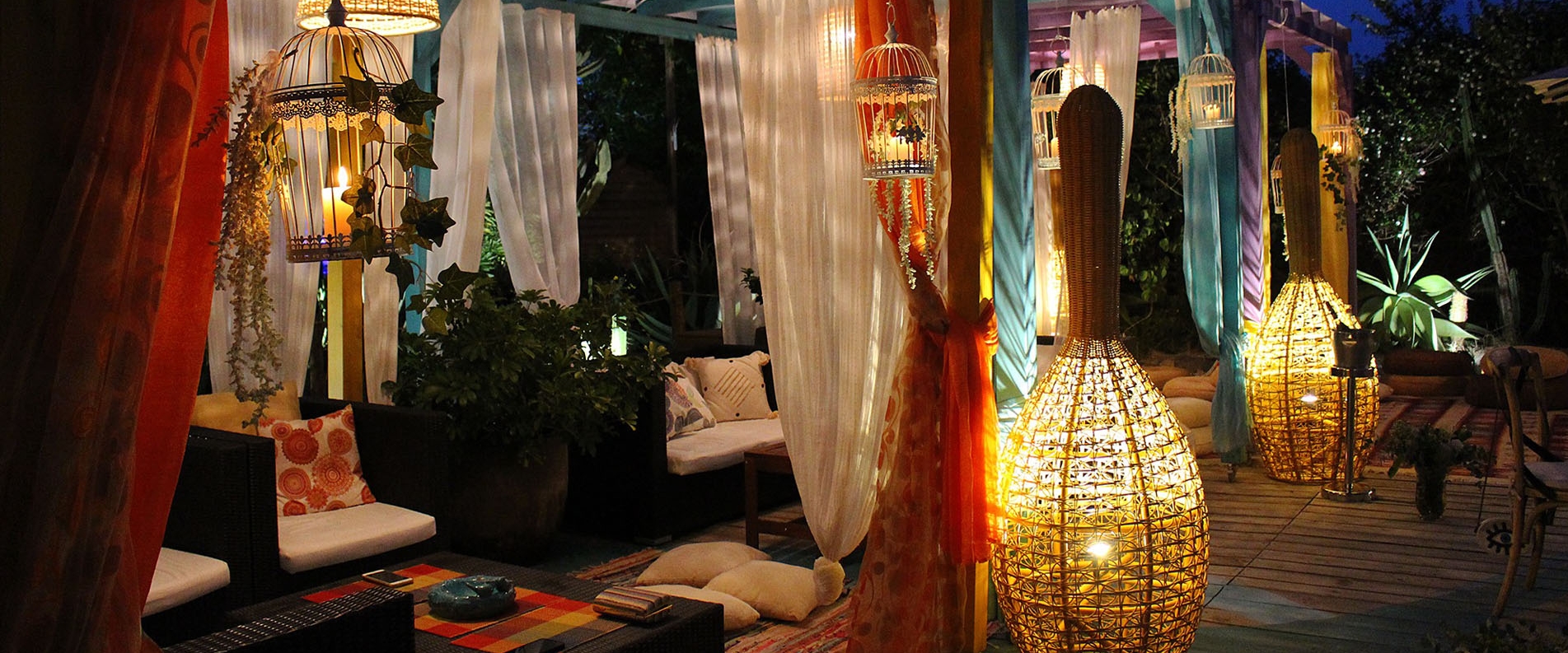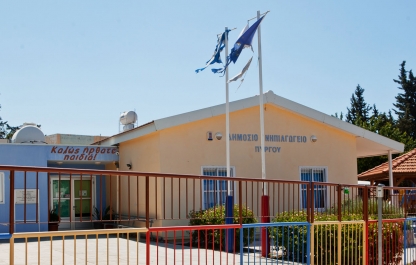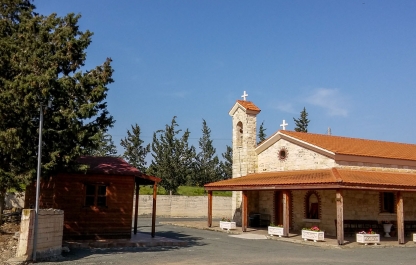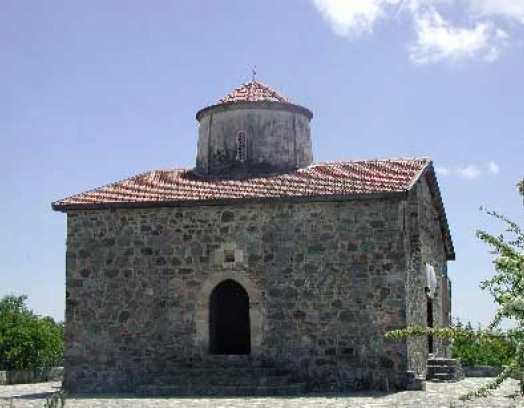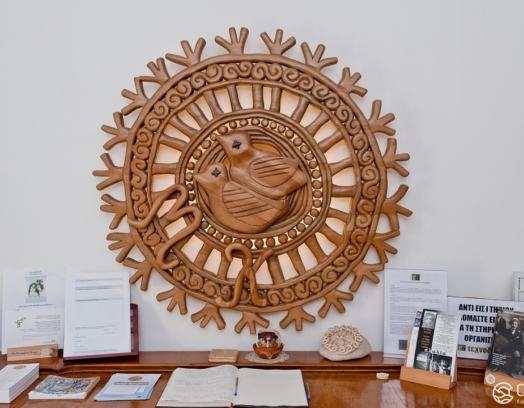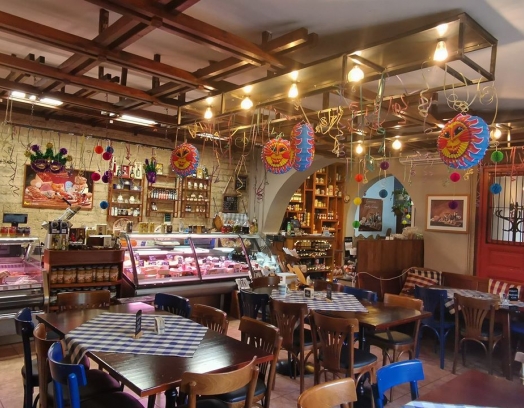In Cyprus, there are more than a handful of places where you’ll inevitably encounter the deep antiquity concealed in the cracks of stone walls and cliff crevices. Like a scent in the air, it spreads from the warm earth to the shadows of old, thickset olive trees; in the evenings, it is inhaled by carriageways trampled under the wheels of dashing cars… Centuries fly by, leaving traces, stories and memories. New times beckon us onwards and don’t give us chance to dwell.
Not far from Limassol, the village of Pyrgos is prepared for change and a new reality, attracting tourists, creatives, and business individuals. Wherein lies its secret? We’ll soon find out.
As you can see from our previous publications,
Pyrgos is rich in historical and cultural meaning, thanks to its favourable location.
The village has been on the map since olden times, with many interesting events taking place here. Pyrgos houses unique remnants of antiquity and is also situated close to popular routes and the central business regions of the island’s second-largest city.
It’s no coincidence that the lands of Pyrgos attracted both clergymen and Roman lords: since times of old, all manner of things have been grown here, such as citruses, carob, olives and almonds; in addition, various fruit trees and vegetables. The cultivated land spans roughly 100 hectares, and also contains several medium-sized cattle-breeding farms.
Today, the most famous spots, which are visited all year round, are the two churches and the water spring — all of which are dedicated to the Virgin Mother.
Pyrgos is home to nearly 2500 residents, and this number is soon expected to increase by around another 150-200 people. Such a case of “demographic explosion” in an individual village is linked to town-planning developments and the future construction of a residential complex by the company Aroma Castle Estate. The future site is to be built from locally quarried stone and other materials which will ecologically and stylistically blend into the surrounding ensemble of traditional buildings.
Modern Pyrgos boasts an urban park with a cafe-restaurant-tavern, a football pitch, two fountains and a children’s play area. In the evenings, this isn’t only a place for avid fans to watch matches and mingle together, but evening events for the whole community are also held here, as well as live concerts of popular performers, large communal celebrations, and dance evenings.
For example, in August 2020, some Cypriot celebrities performed there [1]: the singers Evdokia Kadi, Marios Melekis and Charalambos Charalambous (guitar).
Address: Grigori Afksentiou Street, Building. 24
Telephone: (+357) 99405801
Email: parkopyrgou@gmail.com
Village Website: www.pyrgos.org
Pyrgos, or rather, the Limassol Tower community, also encompasses a natural sandy beach named «Αόρατο» or “invisible, imperceptible”, which spans 1 km. It lies to the east of Limassol’s tourist zone, amongst the luxurious hotels. The sea here is believed to stand out from others thanks to its particular clearness and fine colour.
Very near to the community lies a unique centre for relaxation, an alternative to many of the ones you’ve been aware of previously. Let me say this right away: the type of respite that visitors can find here will far from cater to everyone. And this isn't a matter of price…
Оазис тишины
Silence, harmony of the body and spirit, full awareness, a lack of people, the opportunity to reflect on things and become one with nature — this is the main goal for the creation of this oasis for the chosen, fashioned through the efforts of the concept’s author and his numerous assistants and like-minded visionaries.
Whether you deem yourself part of this community is for you to decide…
We first visited there several years ago at the invitation of its creator, Anthos Miriantous [2], This was when the main construction works were coming to a close, and the finishing touches were being made to bungalows crafted in a fantasy style à la Antonio Gaudi [3] along with the territory pathways.
That day, we gladly took our time strolling along the park pathways which consisted of several exotic, themed gardens. And with each new turn, fresh views and elements of the park design were revealed to us. These were sights you could perhaps expect to encounter in India, Nepal, Thailand or Myanmar, but never on an island in the East Mediterranean.
In a pond, concealed under blooming lotuses, something was
splashing and gurgling: the faint golden spines of carp twinkled, and from time to time, the head of a curious terrapin would surface.
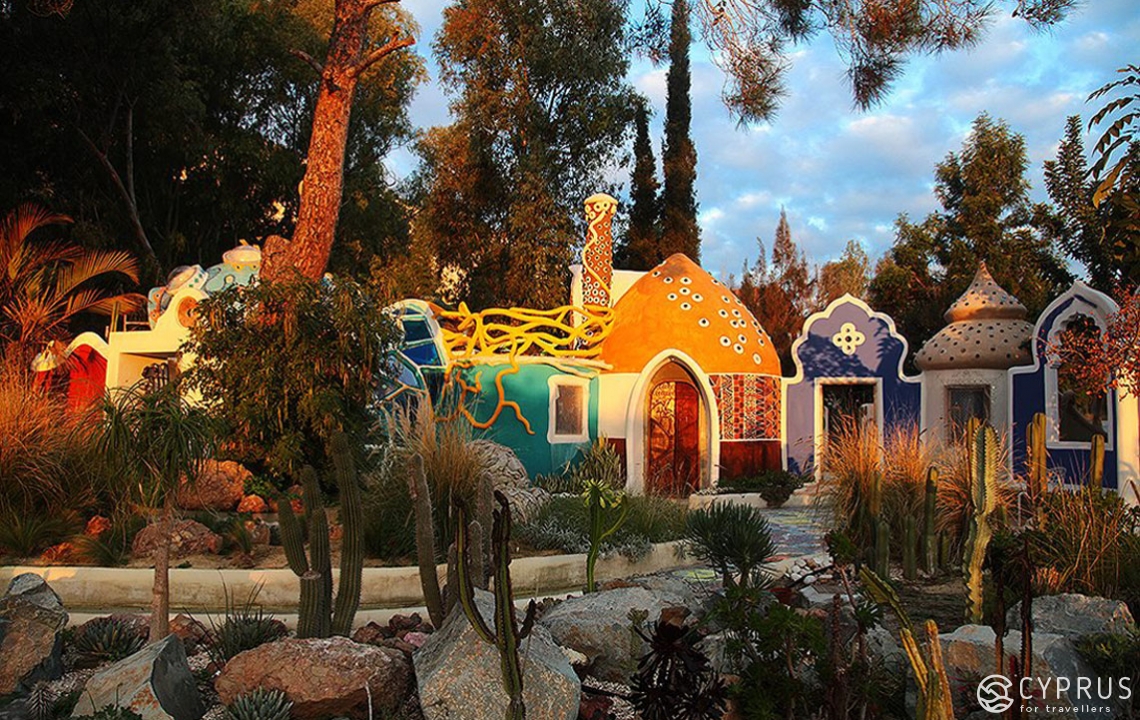
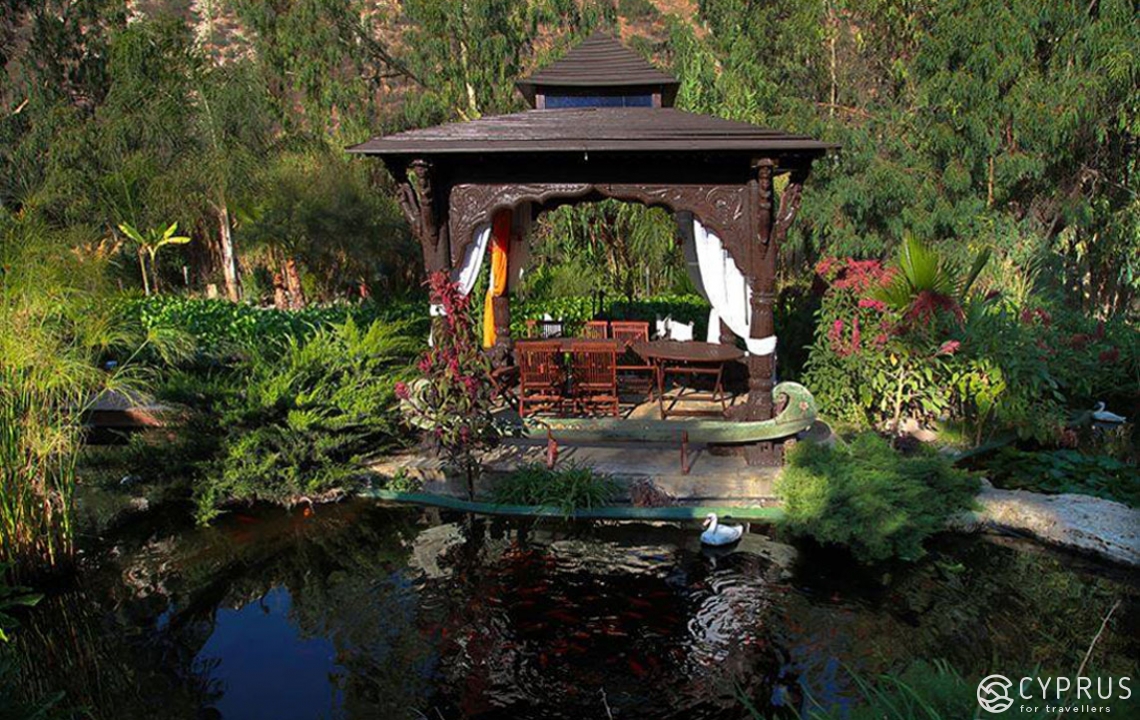
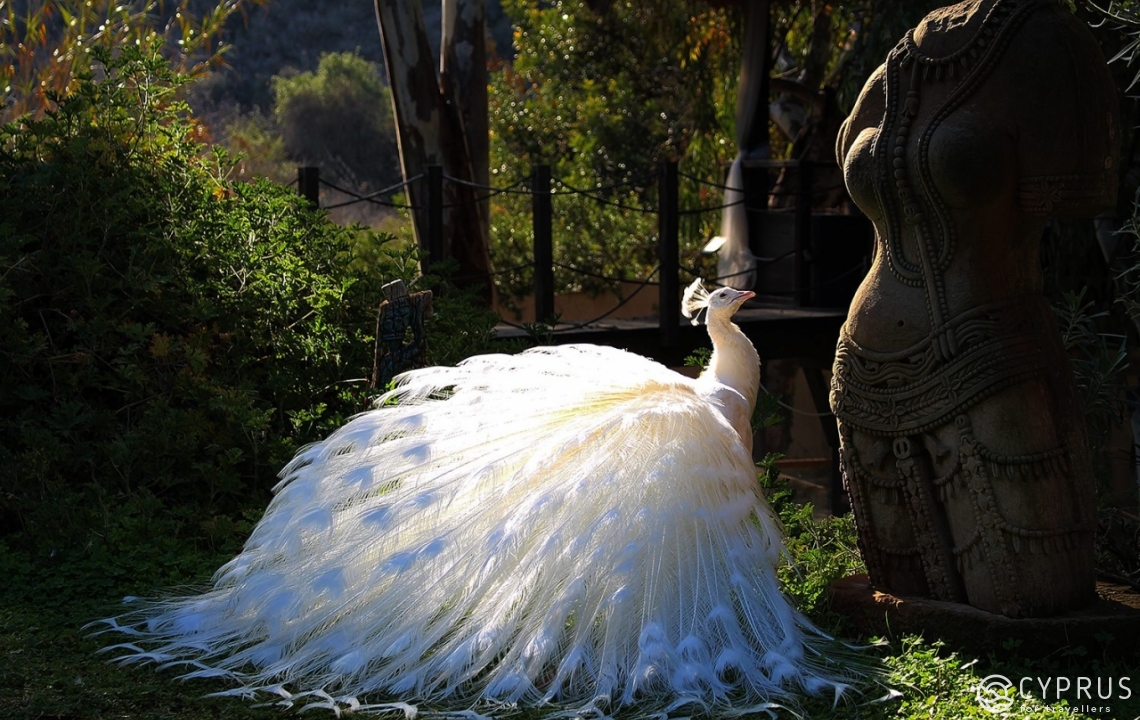
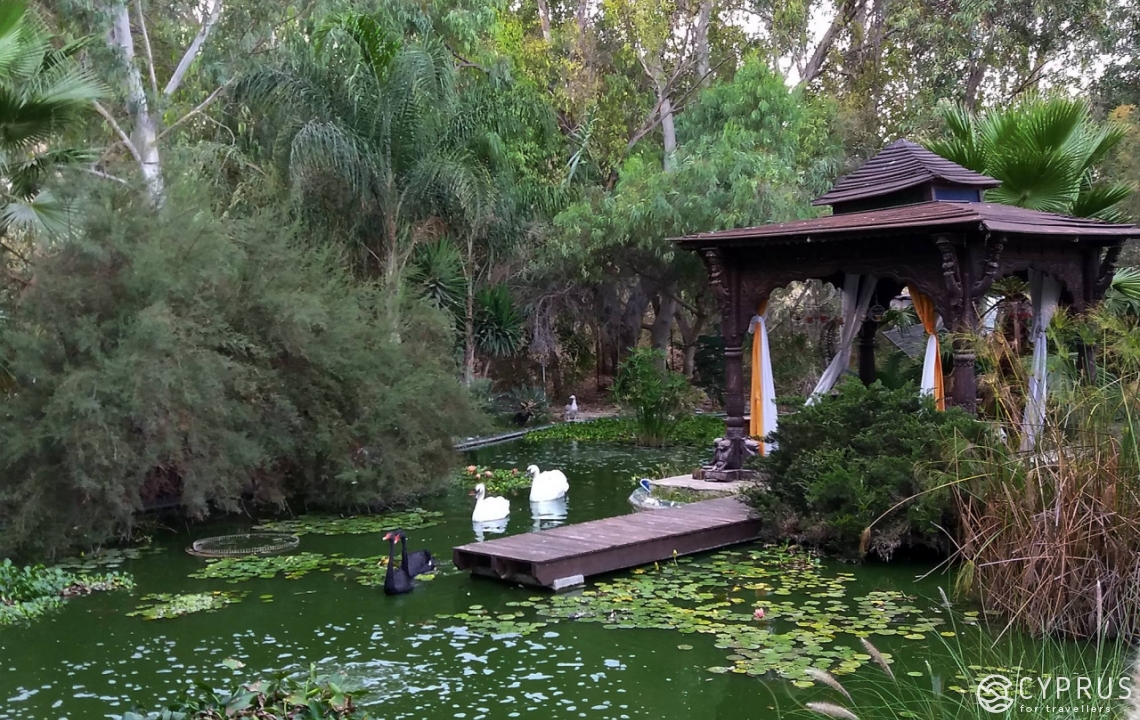
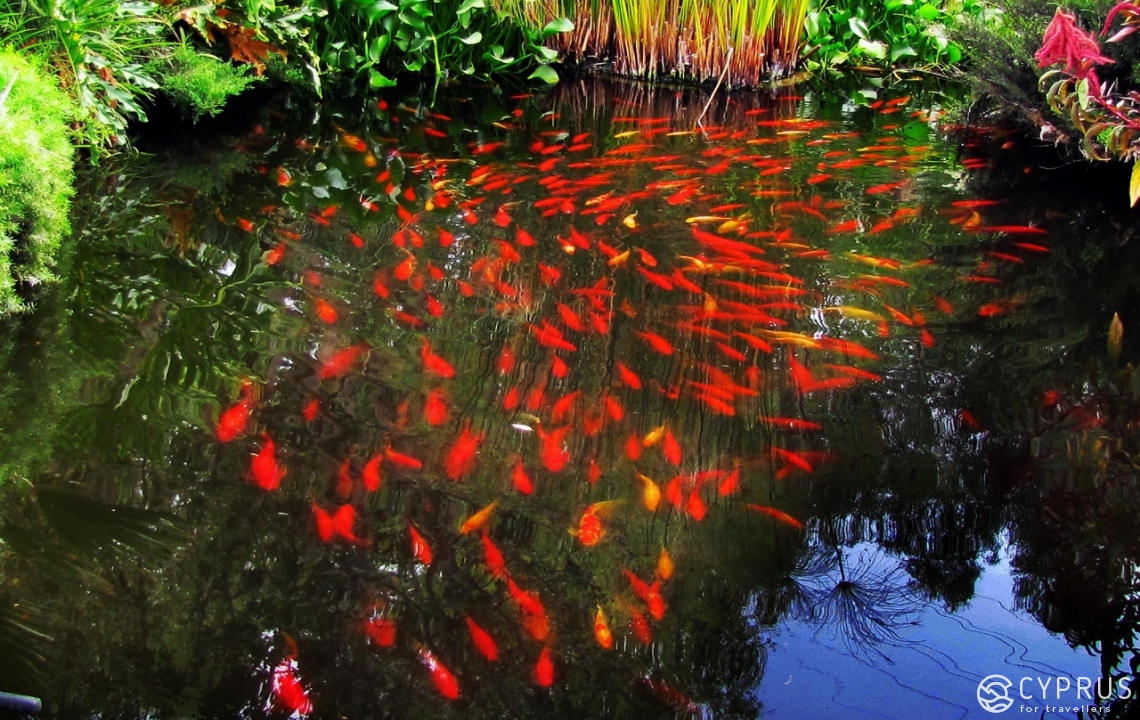
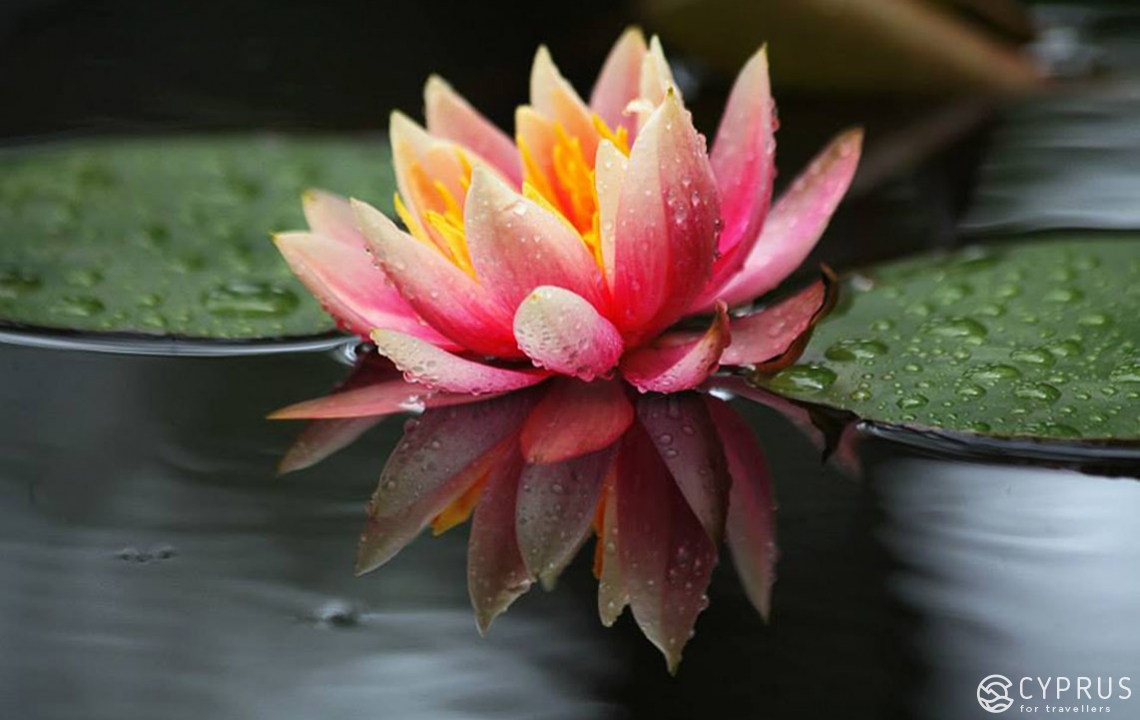
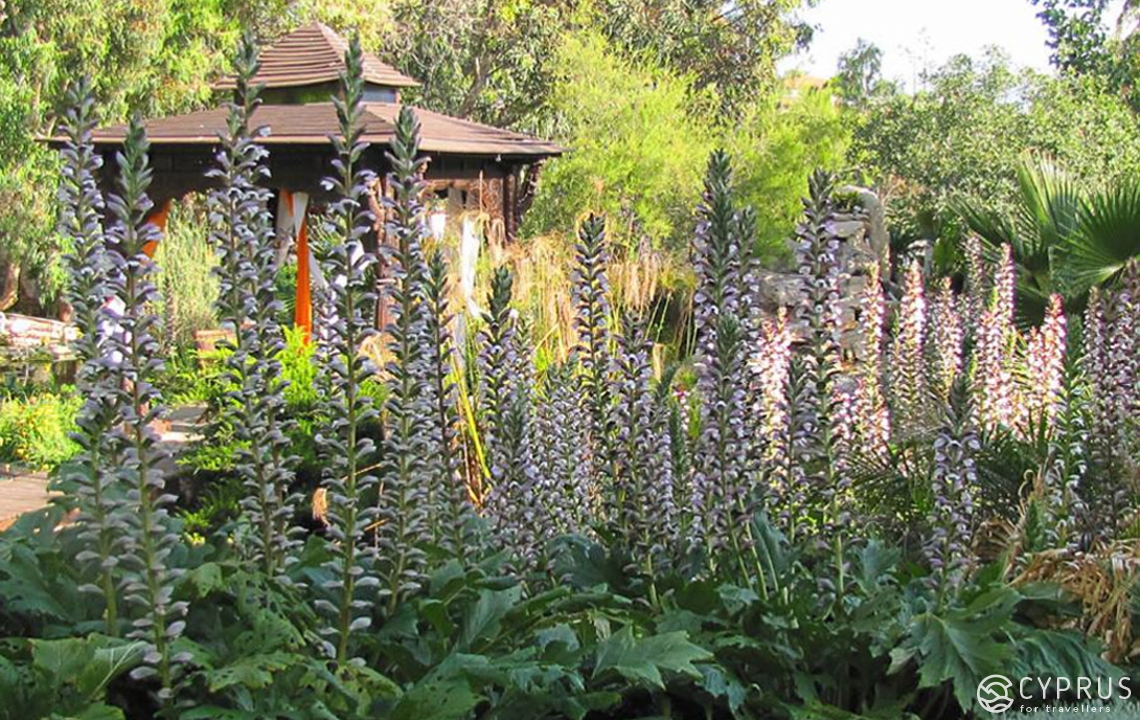
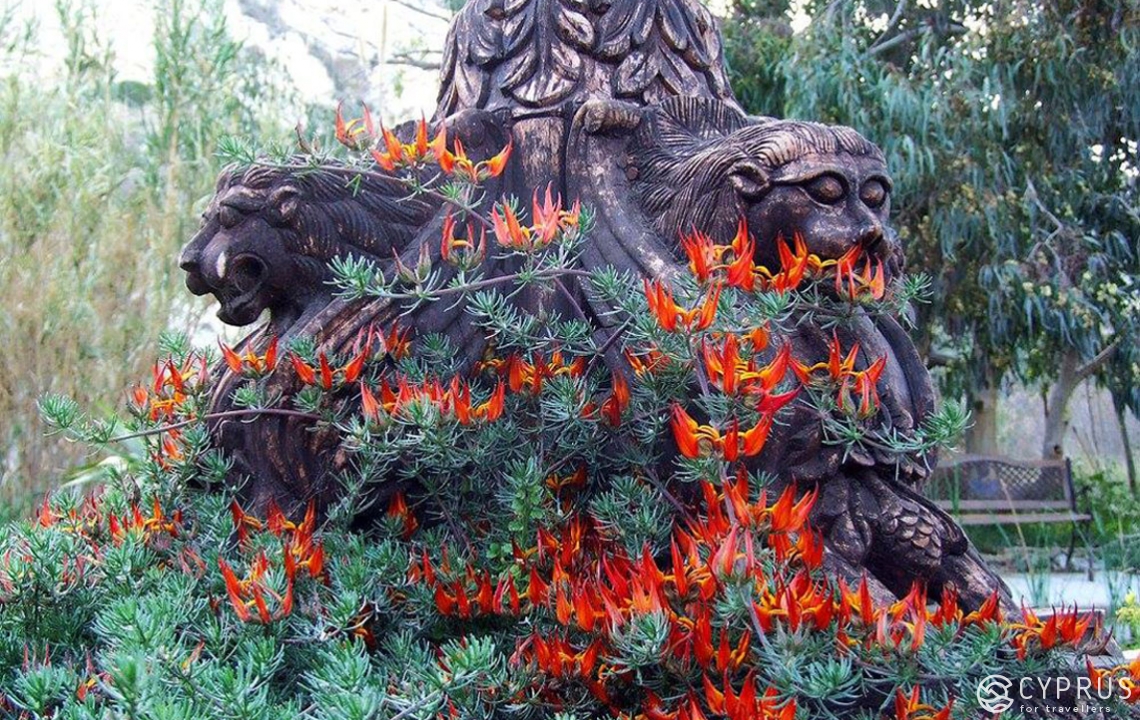
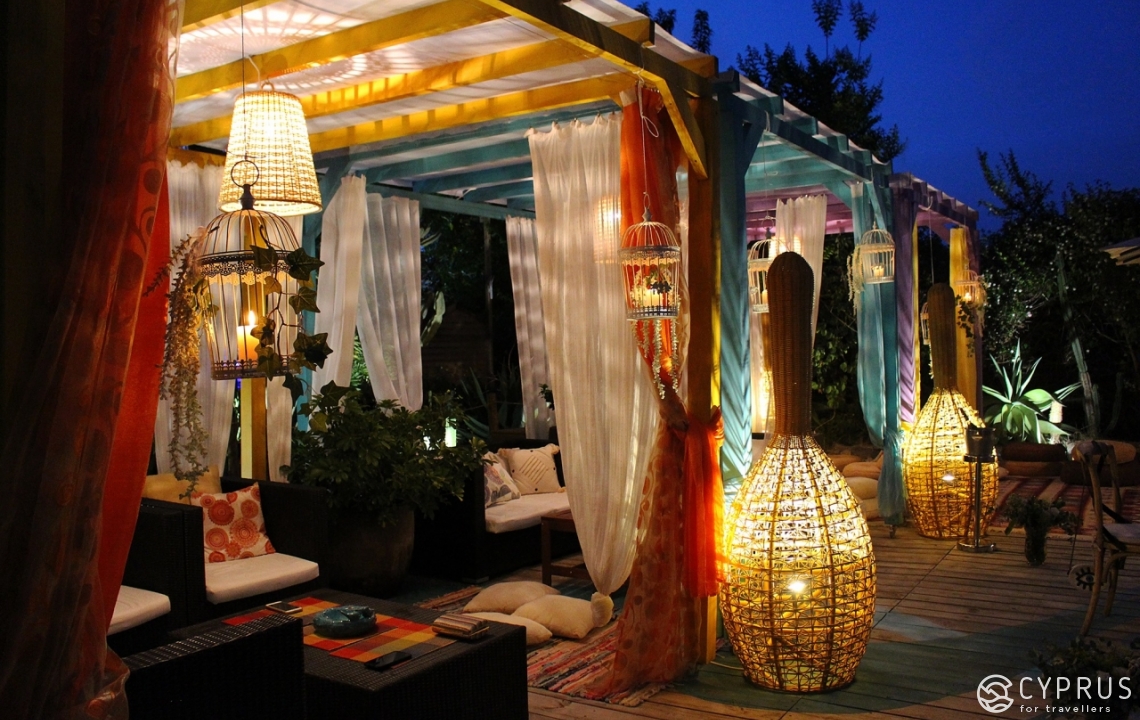
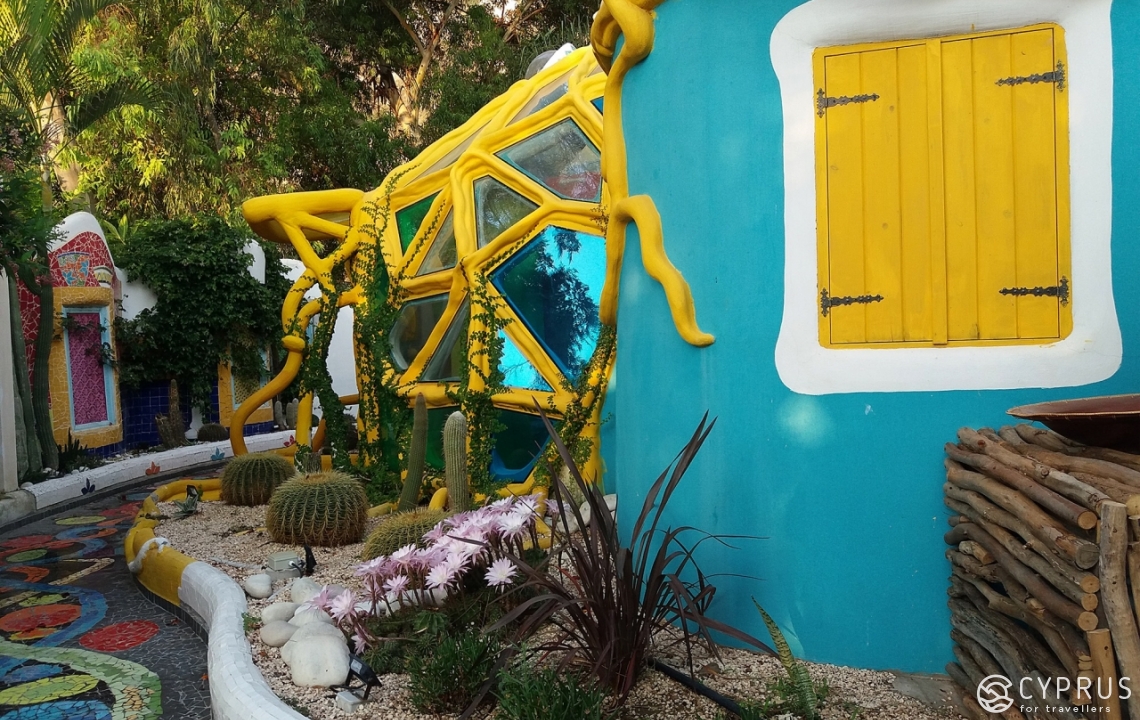
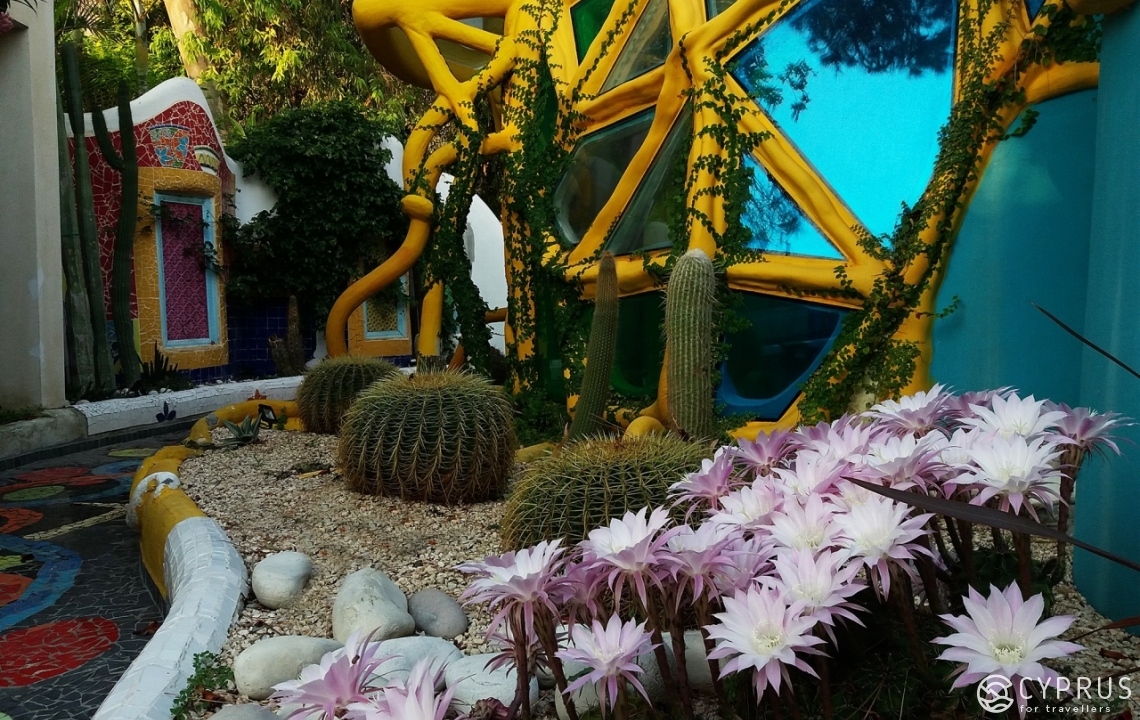
Being here, you start to move more slowly and notice a number of details: from the specks of light atop the water and the scent of the flowers to the abundance of sound combinations picked up by the ear of a modern person as they arrive here; a person accustomed to constant sharp and loud stimuli such as deafening silence.
The owner of this estate invited us to pass through to the main house, and showed us a part of his collection of rare items. Here everything was also laden with ideas, items, and a way of life which he’d brought back from his travels. It seems like you’ve stepped into the house of a collector and explorer from roughly 100 years ago: tranquility, colonial style, panoramic windows and old-fashioned chests… Anthos was full of ideas: he showed us the plan for his brainchild; meanwhile, more and more people began to visit him, either desiring to participate however they could in the work, or wishing to sponsor its construction.
The park hotel will also appeal to those who simply wish to spend a few hours here and participate in the exercises occasionally organised, while surrounded by genuine jungles and exotic plants glancing into a pond of swans. In fact, at one time they were going to build… a scrap heap here, but artistic vision allowed what likely could have been taken and thrown away to be used as an original piece of decor, granting beauty to all who come here: the heaps of ceramics and glass were recycled into construction material and were used in the ensemble’s mosaic decor.
All three residential studio installations, each round in shape with a steep dome, were erected in accordance with the precepts of so-called organic and bioclimatic architecture.
This conceptual approach of striving for a natural look, thanks to the introduction of new materials, has become more popular since the second half of the 20th century. An integrated approach to the human “habitat”, expressed by the founder of the movement, F. Lloyd Wright (1867-1959), when an architect not only creates a building project but also, adhering to a logic of modularity, develops all the details of the external and internal environs, including the decor and furnishings— over time, all of this gave impetus to the organo movement, whose two branches we can see embodied in the Euphoria project: ecological architecture and bionics. Euphoria is characterised by its respect for the natural environment, absence of emphasised linear/rectangular shapes and compositional solutions, use of natural materials and ecological approach concerning air conditioning and heating spaces, and so on.
According to Anthos, he was spurred on to create the project by the numerous travels he has embarked on, one after the other, for many years [4]… He’s well acquainted with many points in the world: from Ethiopia to Mexico, from India and Morocco to Columbia. On his home shores, not far from Limassol, in the late 1990s, he found a spot where you could create an “ashram of peace”. It was also decided from the very offset to enrich the local flora: 20 years ago, Anthos set to work planting trees along the riverside, and in the future planned to lay the foundations here for a village of like-minded thinkers— immigrants from different countries, so that people could communicate to better learn about others and their cultures, as well as comprehend their place in the world.
In his words, the main thing was the desire to thus organise a space where everyone could obtain a new, memorable experience. Today, in a world where noise and stress reign supreme, these islets of serenity for the body, mind and soul are of great necessity.
And so, three cottages symbolising three “countries”. For example Blue House: the design choices for this space form a unity of motifs and colours from Morocco and India. Guests are surrounded by modern artworks as well as furniture and household items handcrafted using traditional techniques.
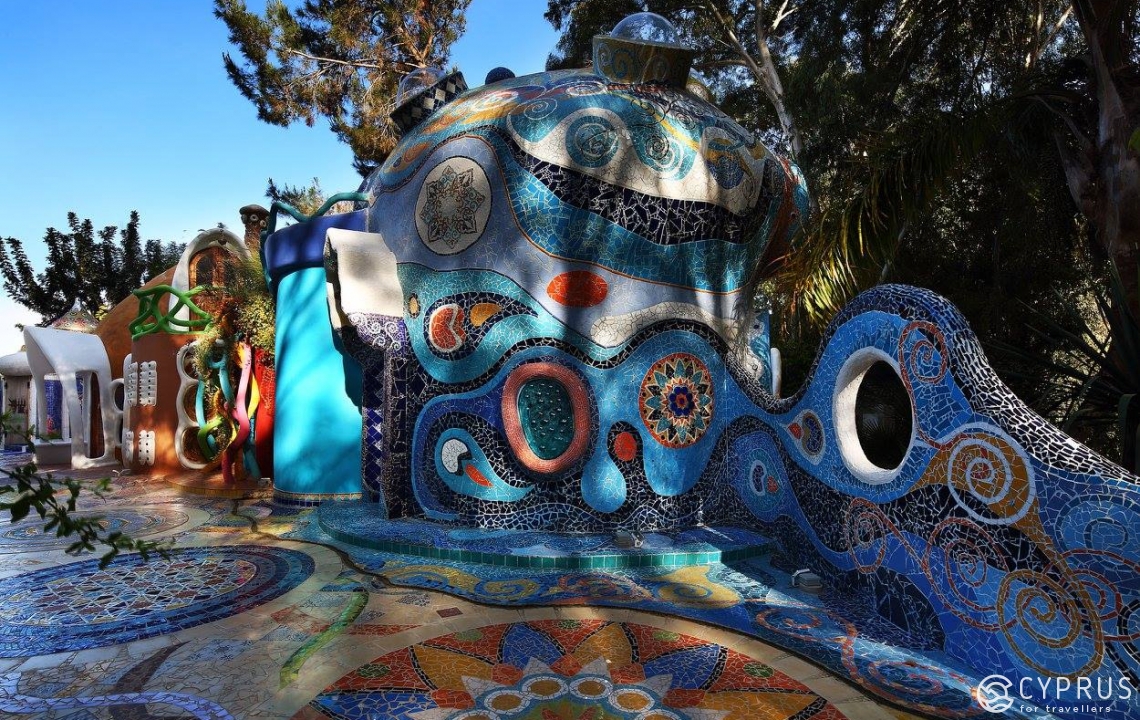
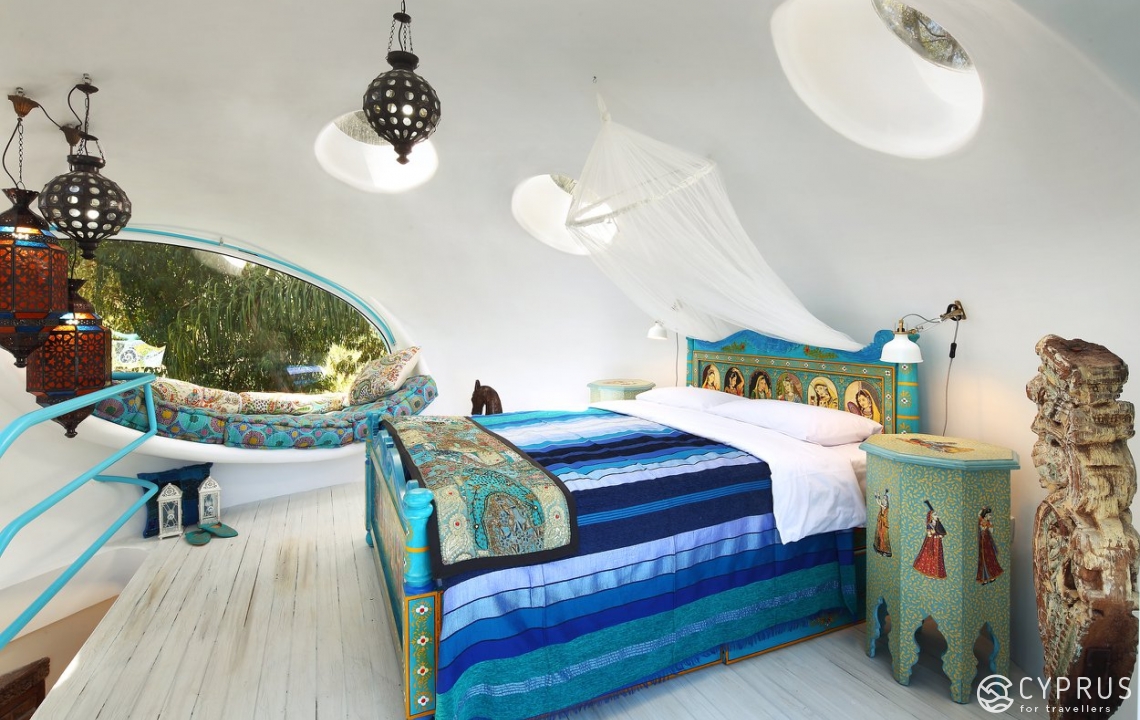
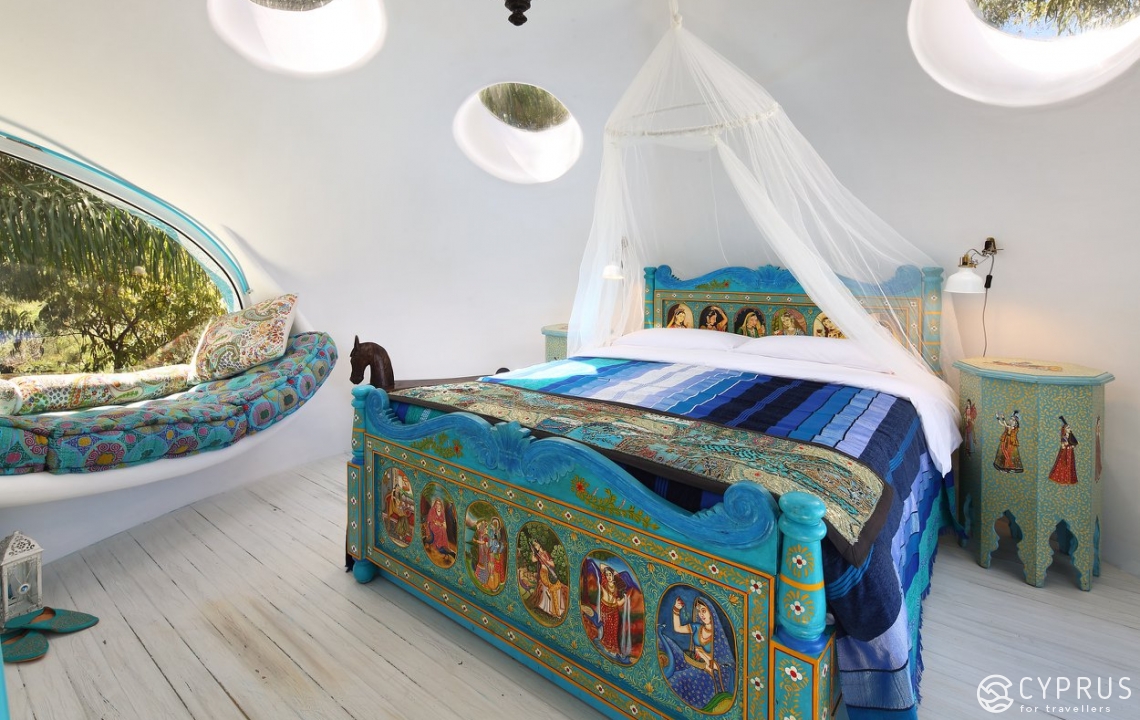
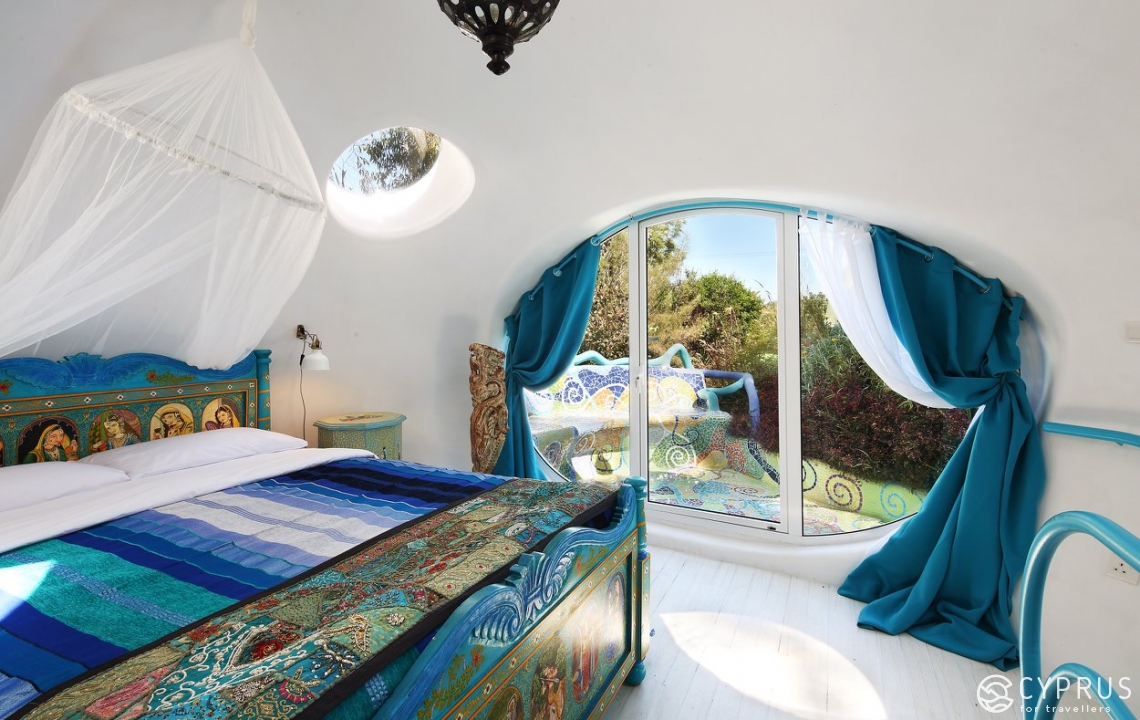
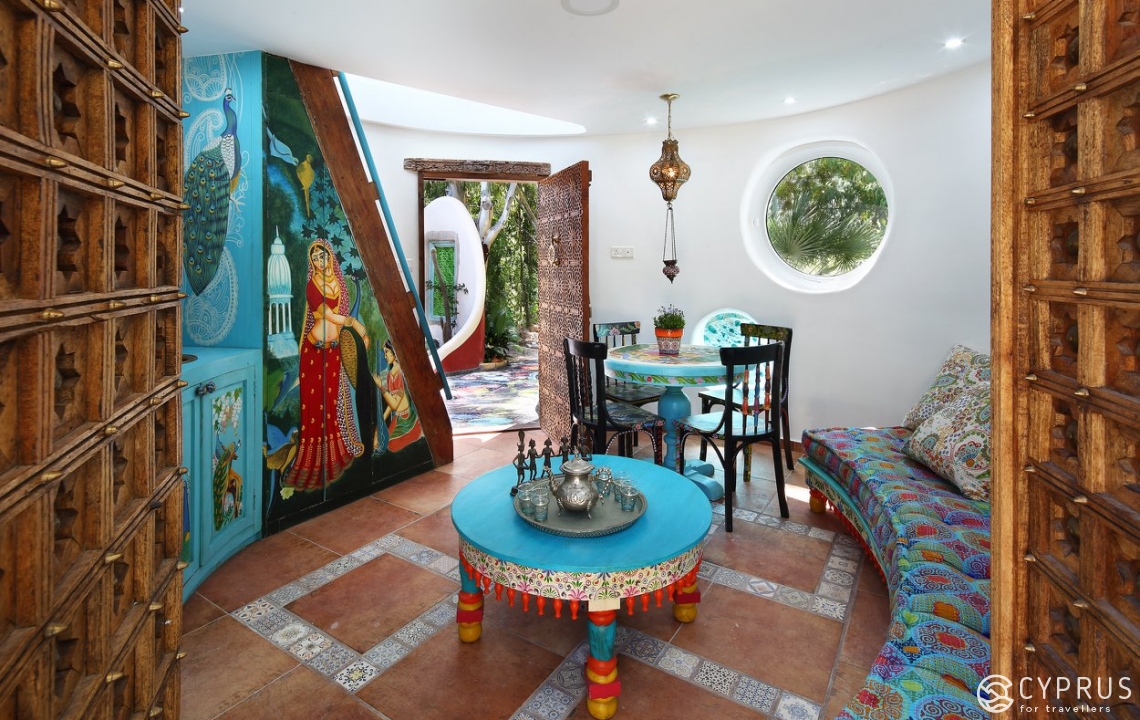
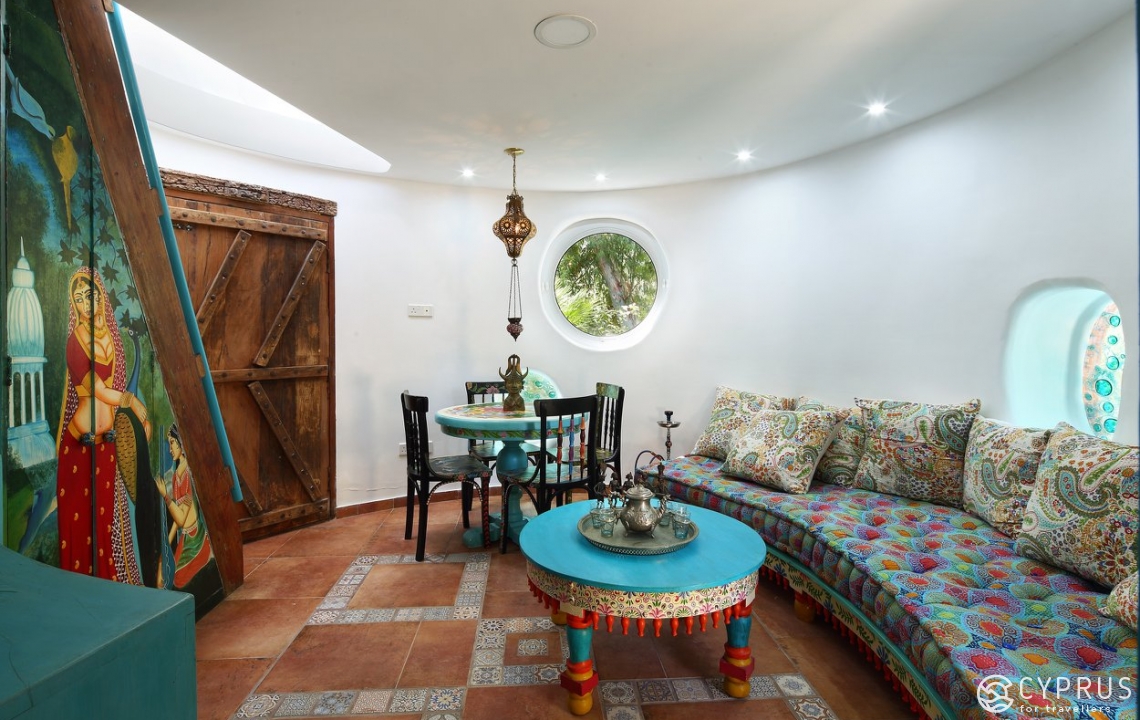
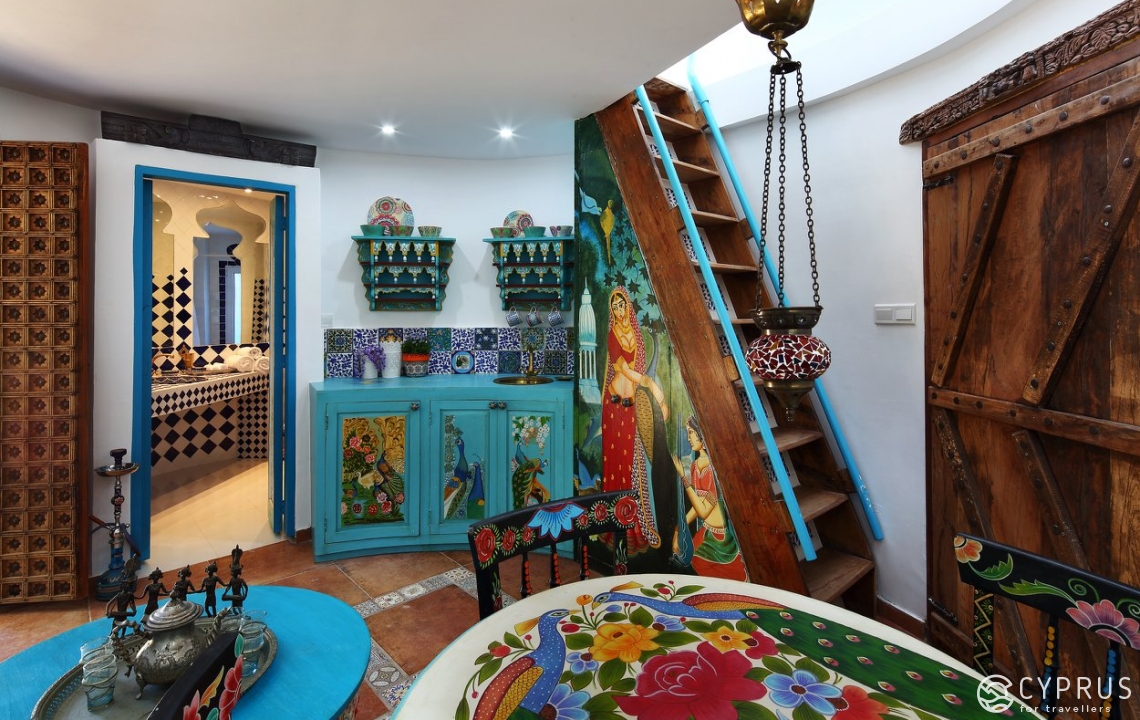
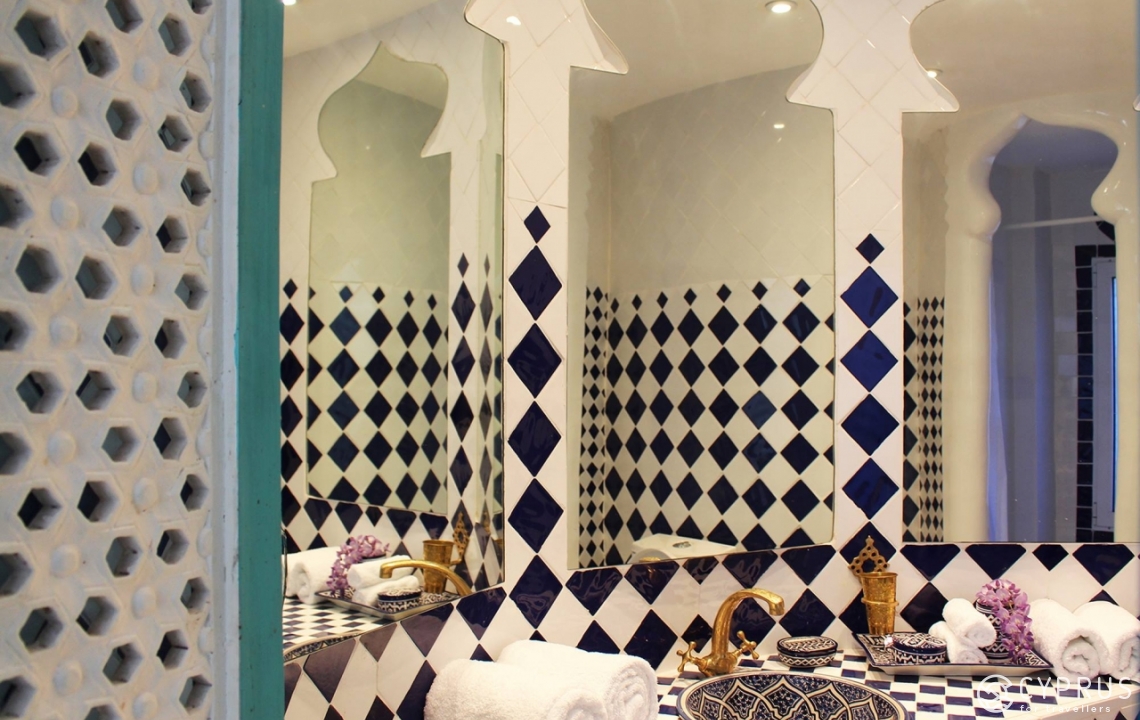
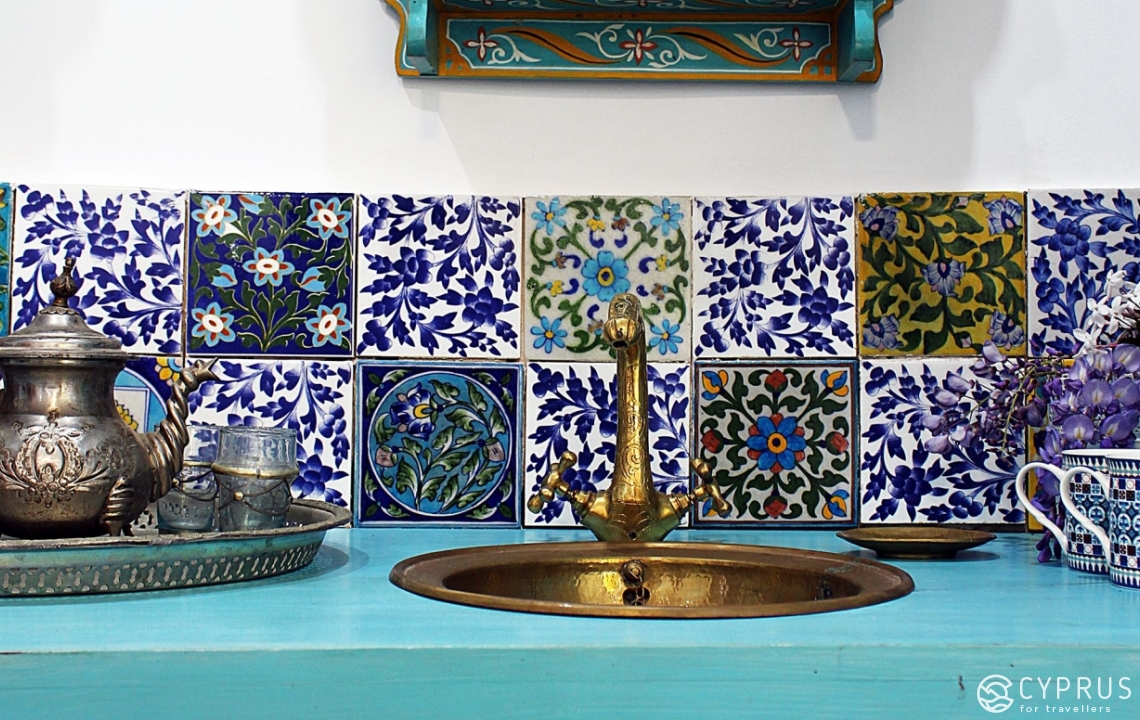
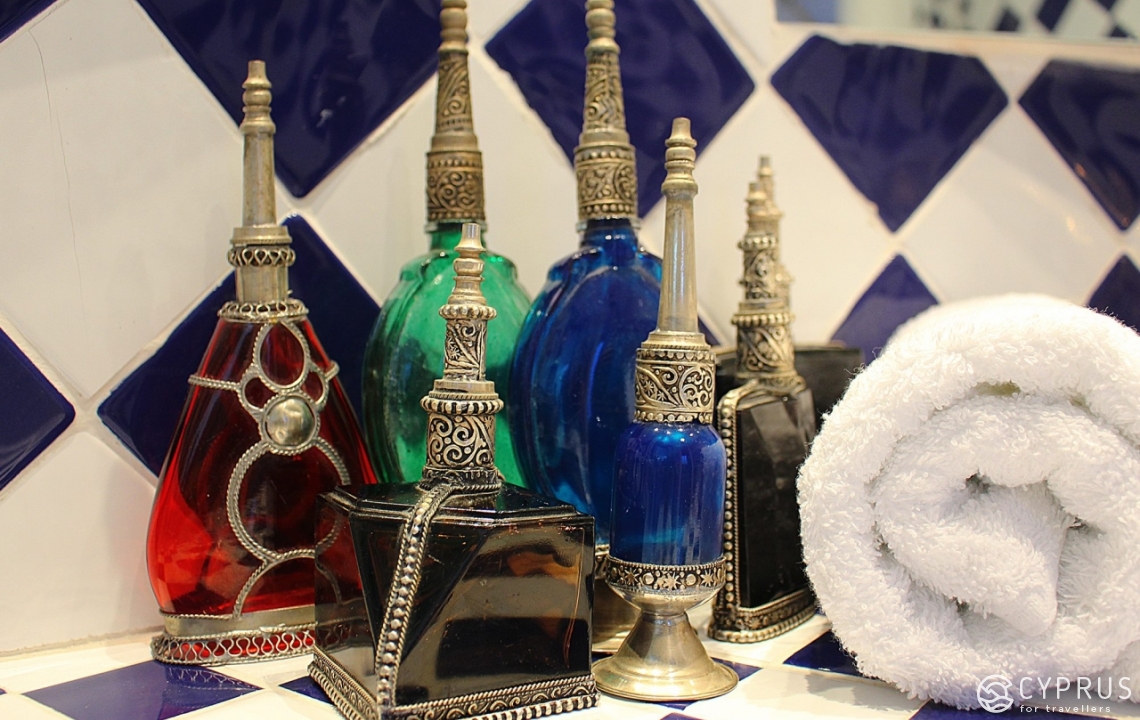
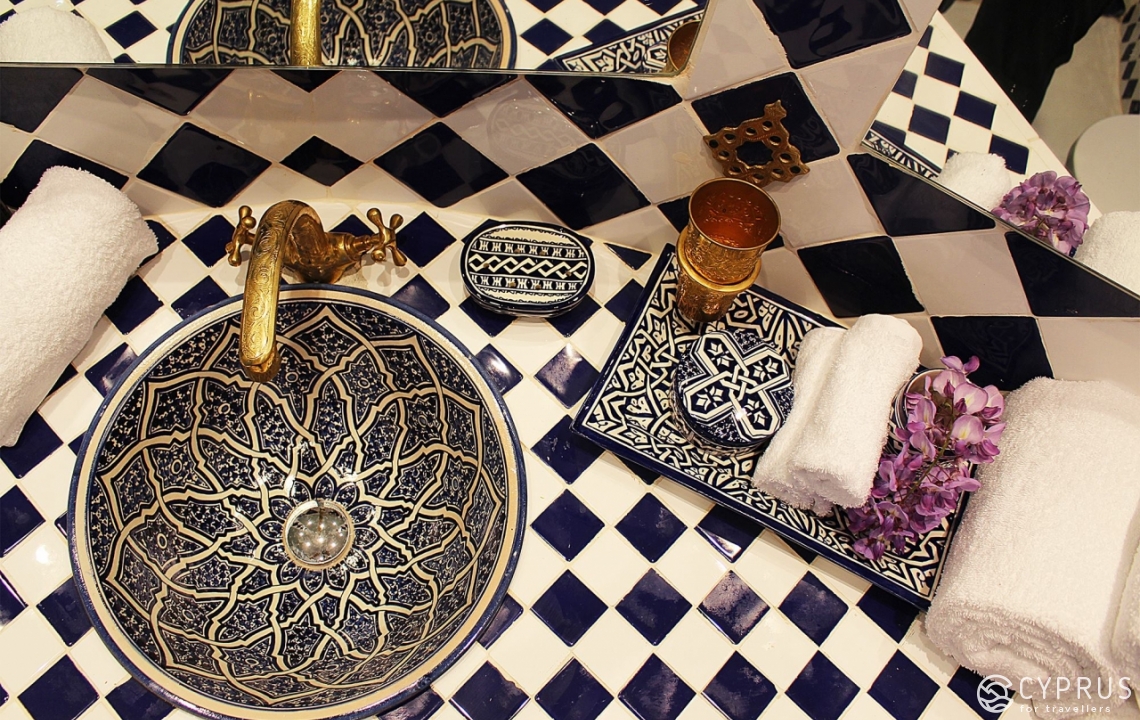
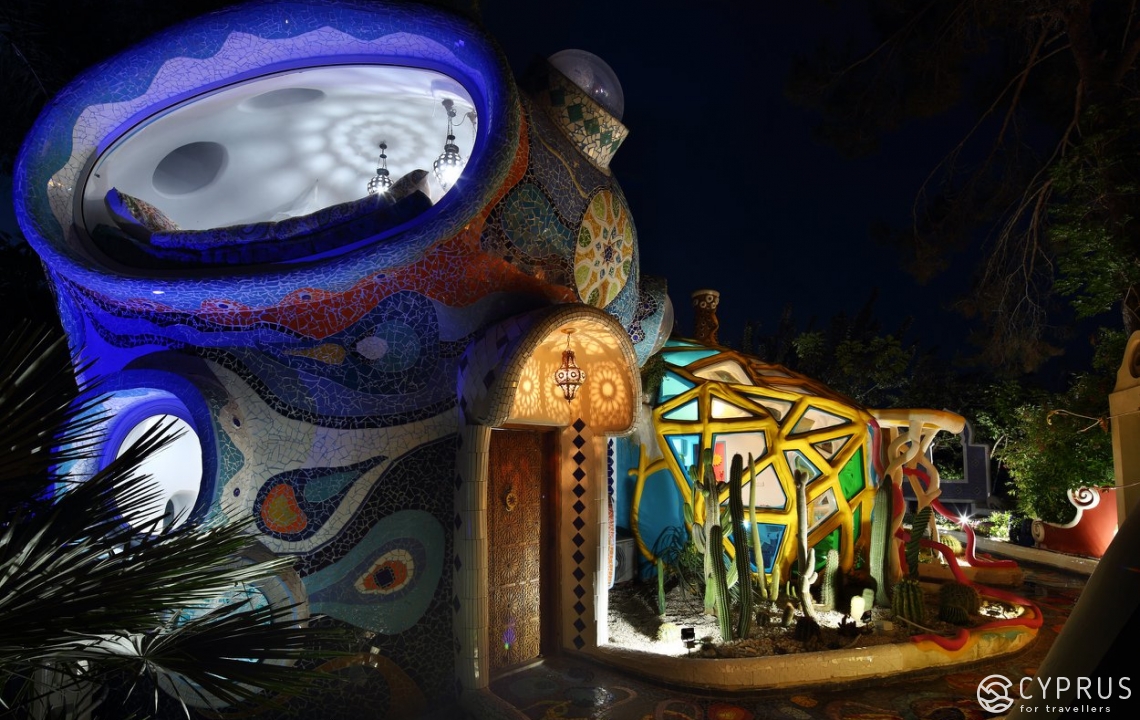
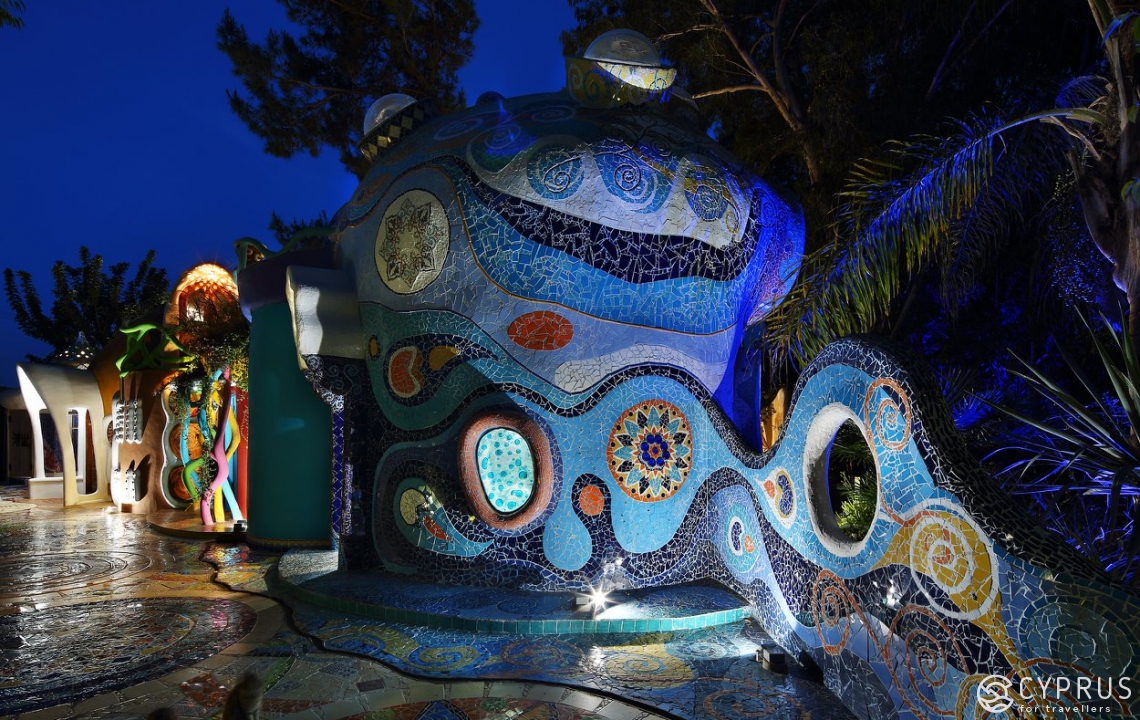
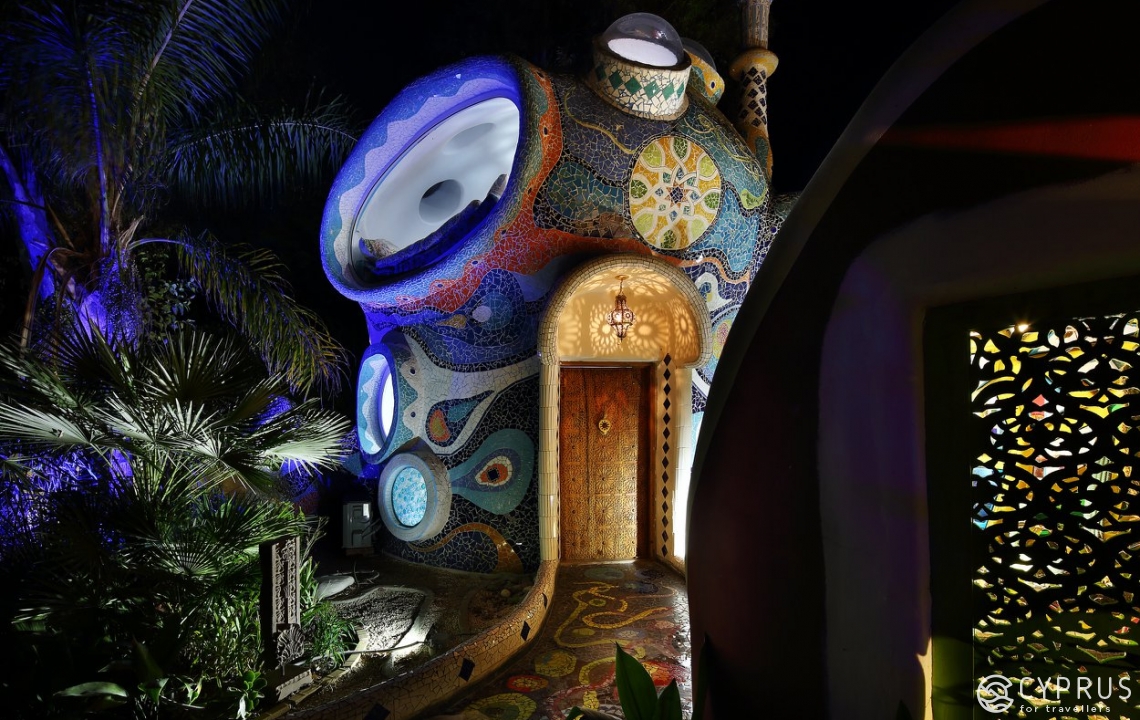
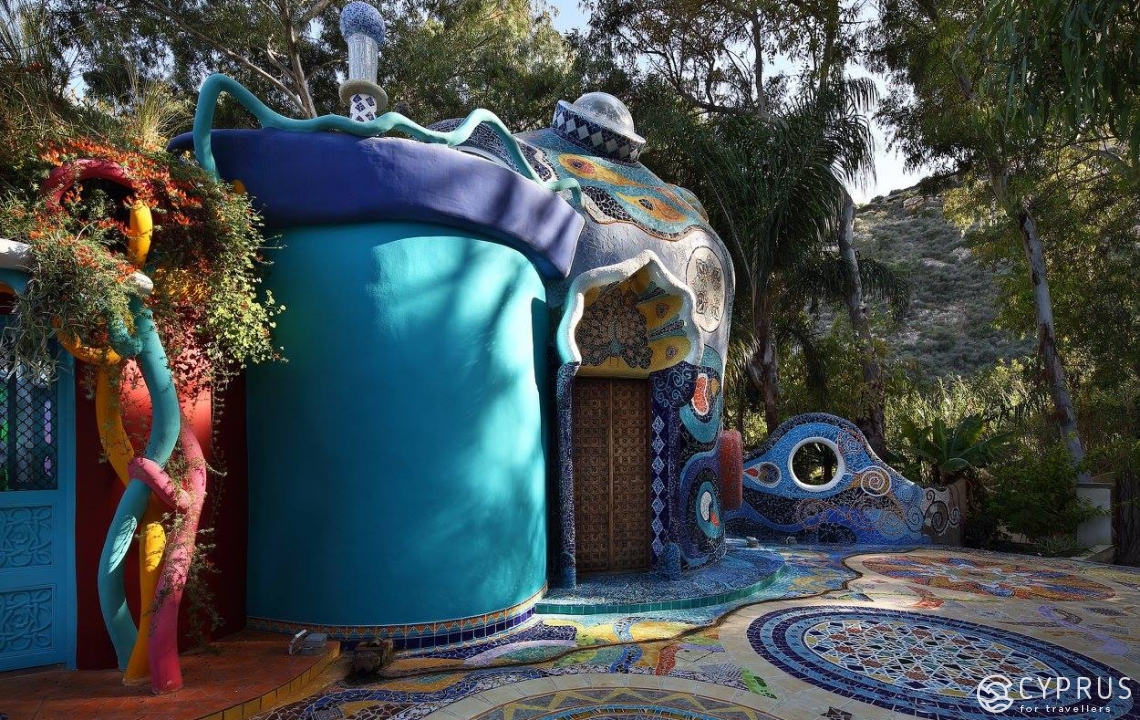
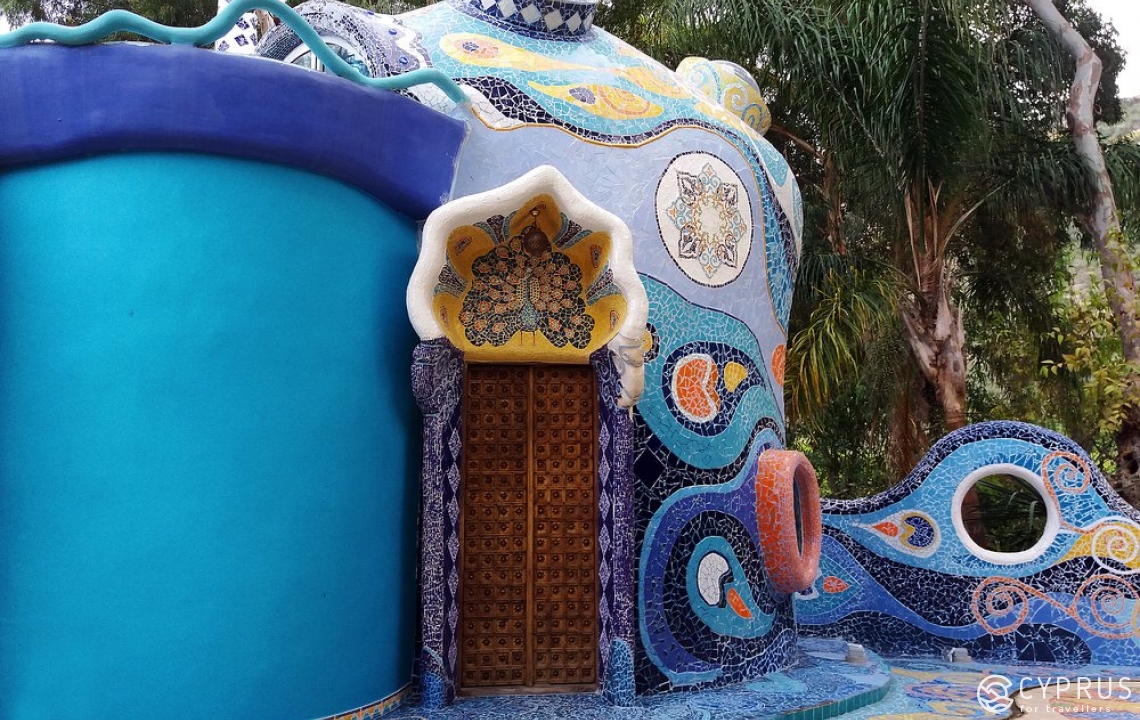
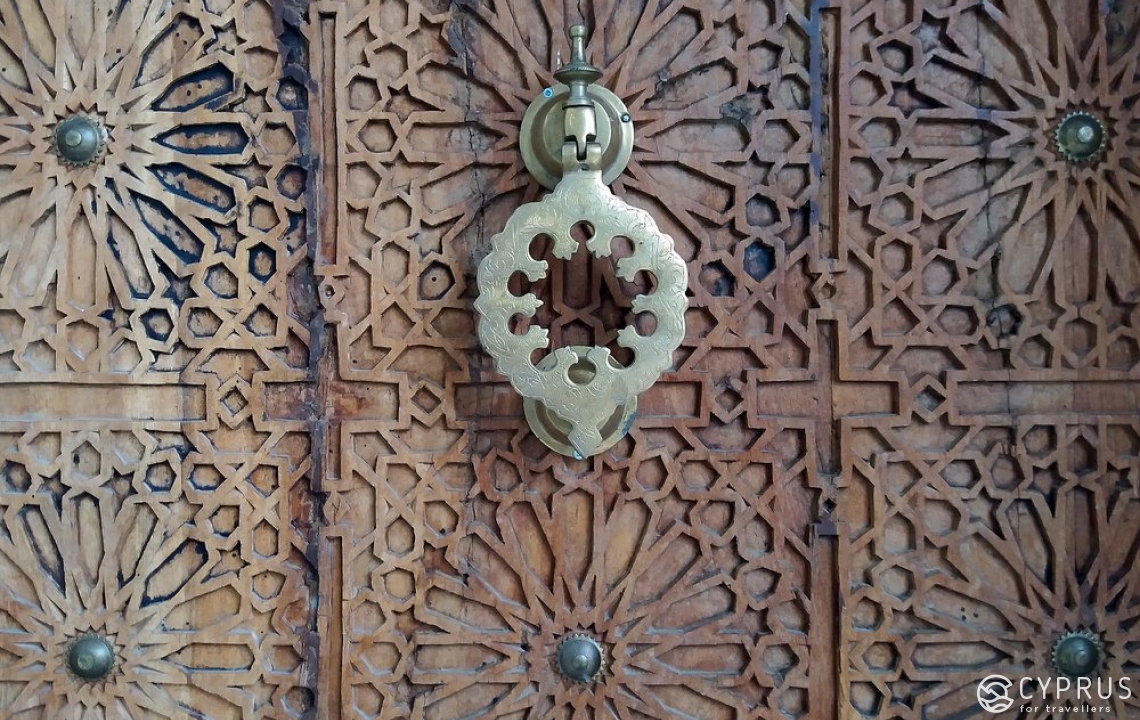
The second house — Earth House — is a tribute to Africa and its indigenous peoples. The groove of the Dark Continent’s sultry motifs can be seen reflected in hand-woven textile ornaments, as well as ceramic and wooden items. The balcony reveals a view of the gardens and mosaic pathways in the “oasis”.
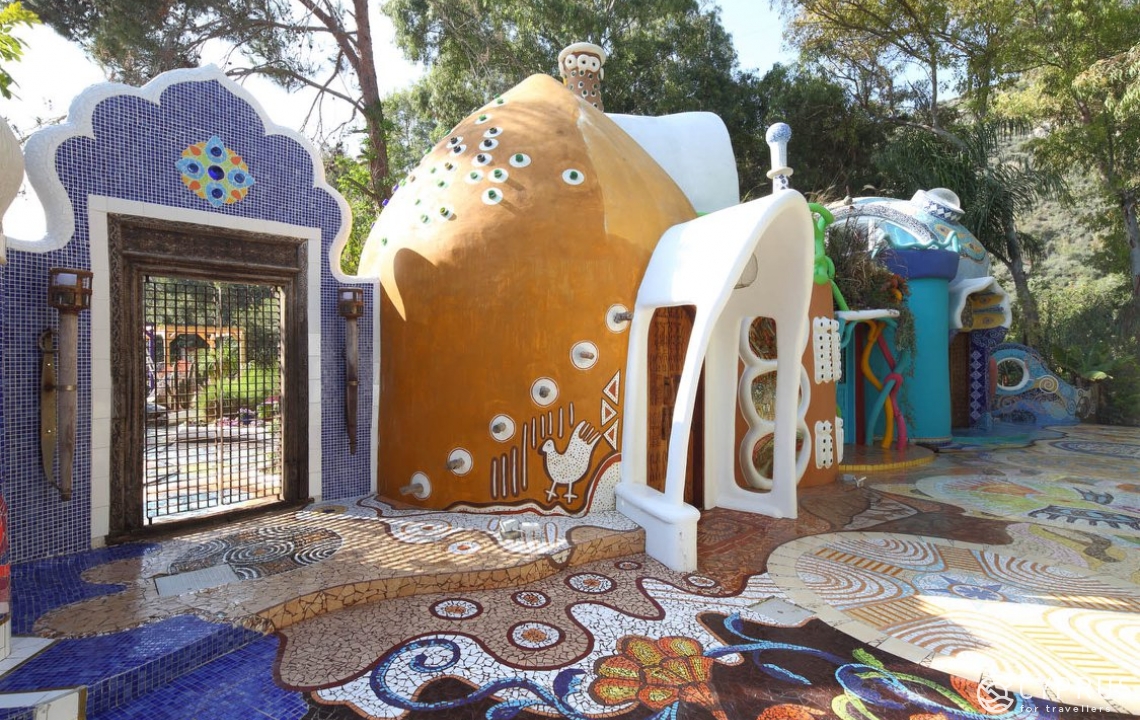
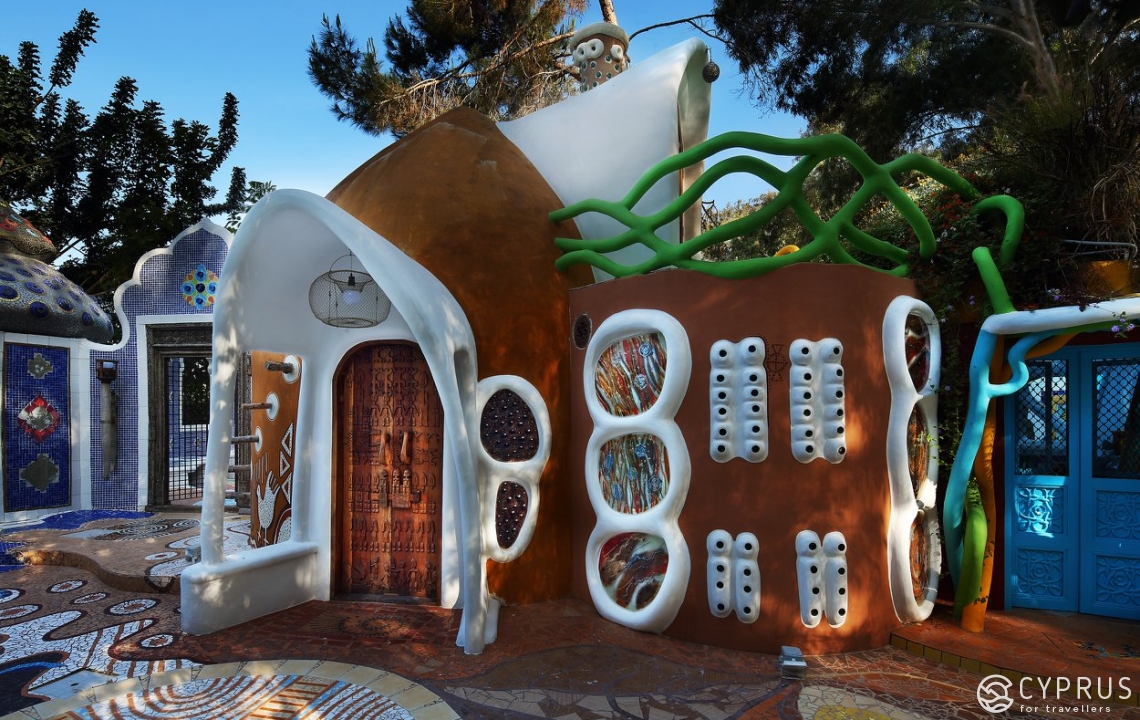
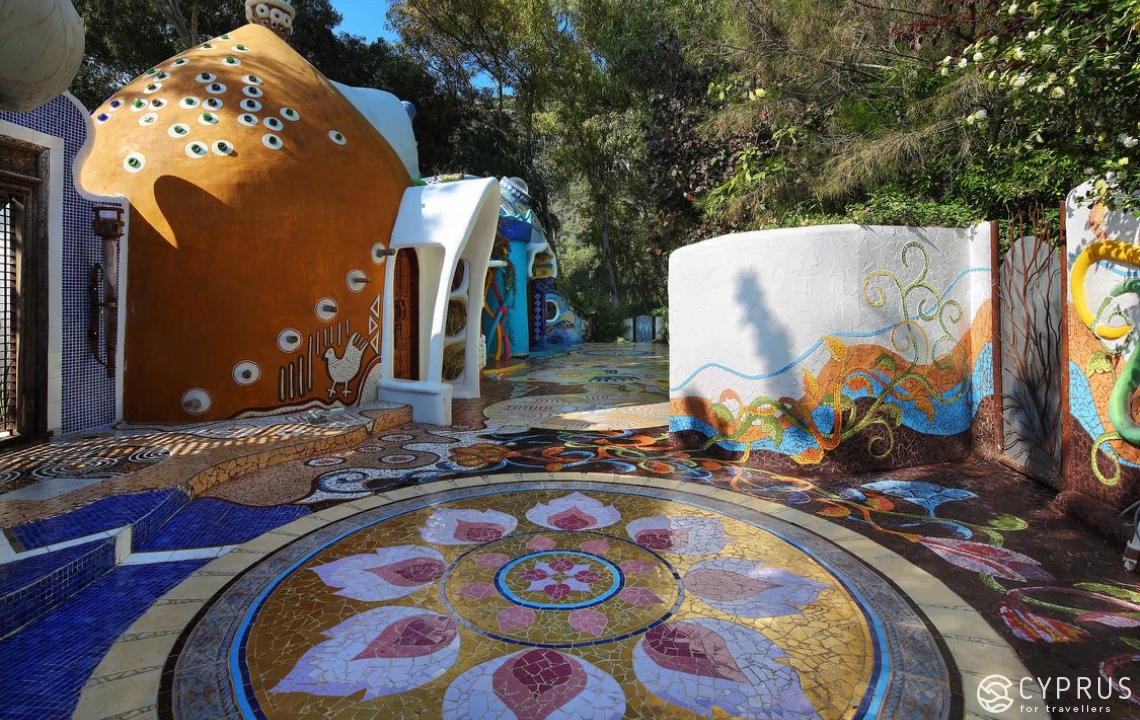
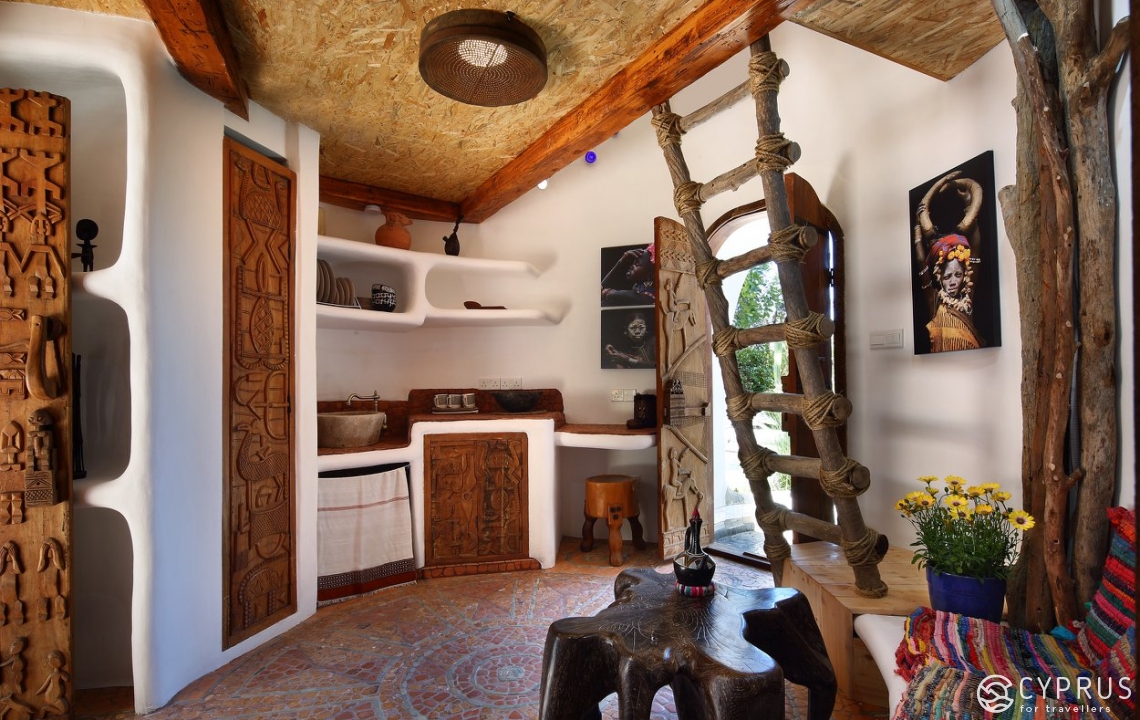
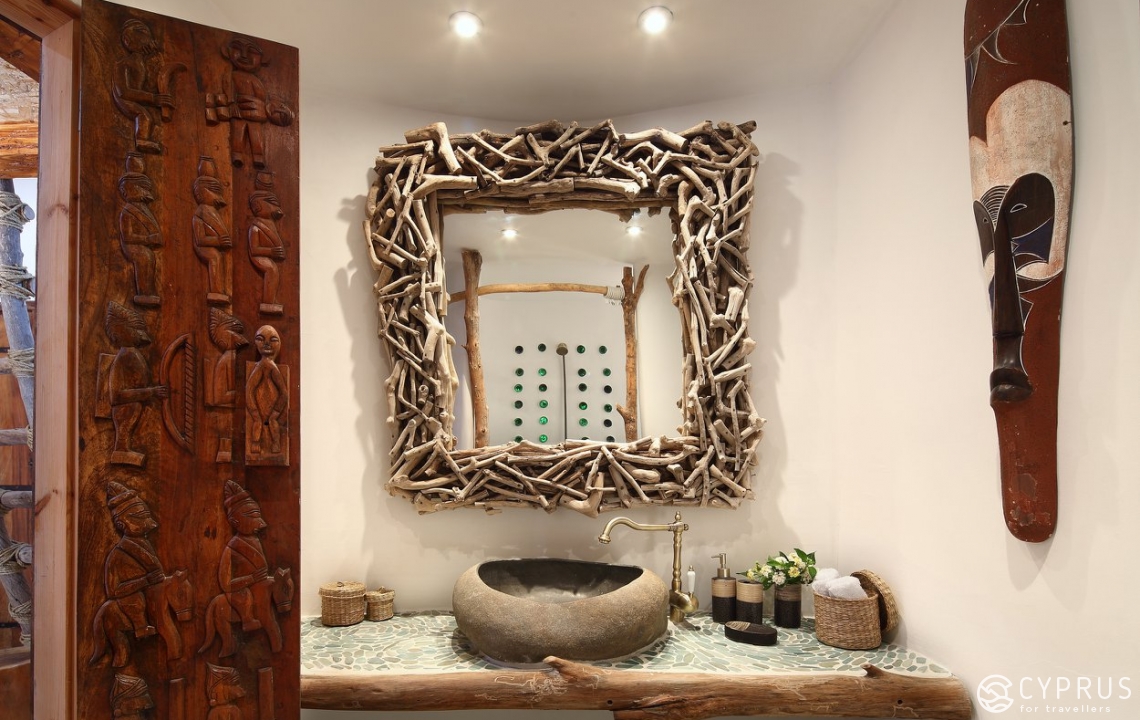
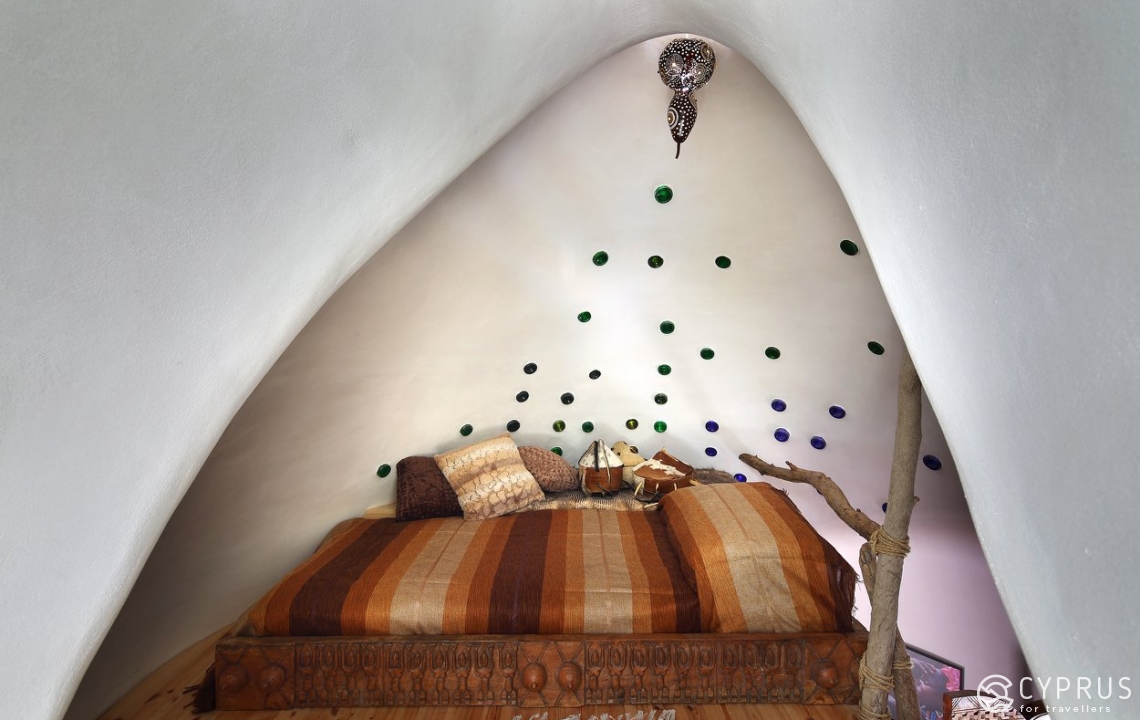
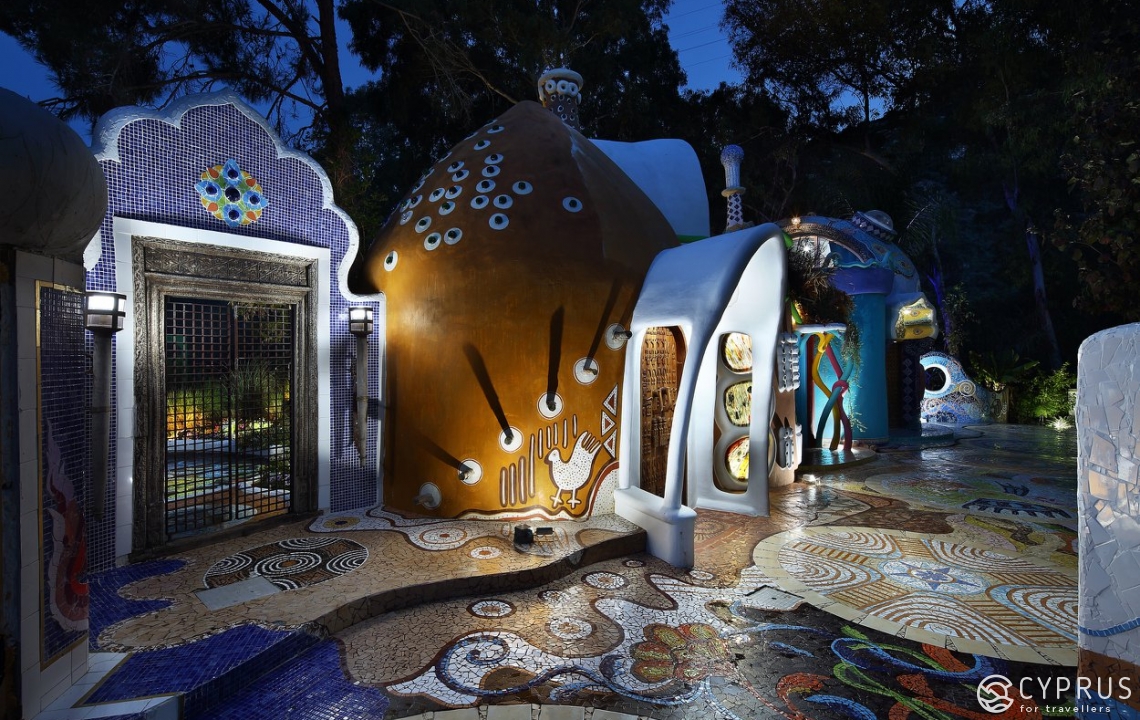
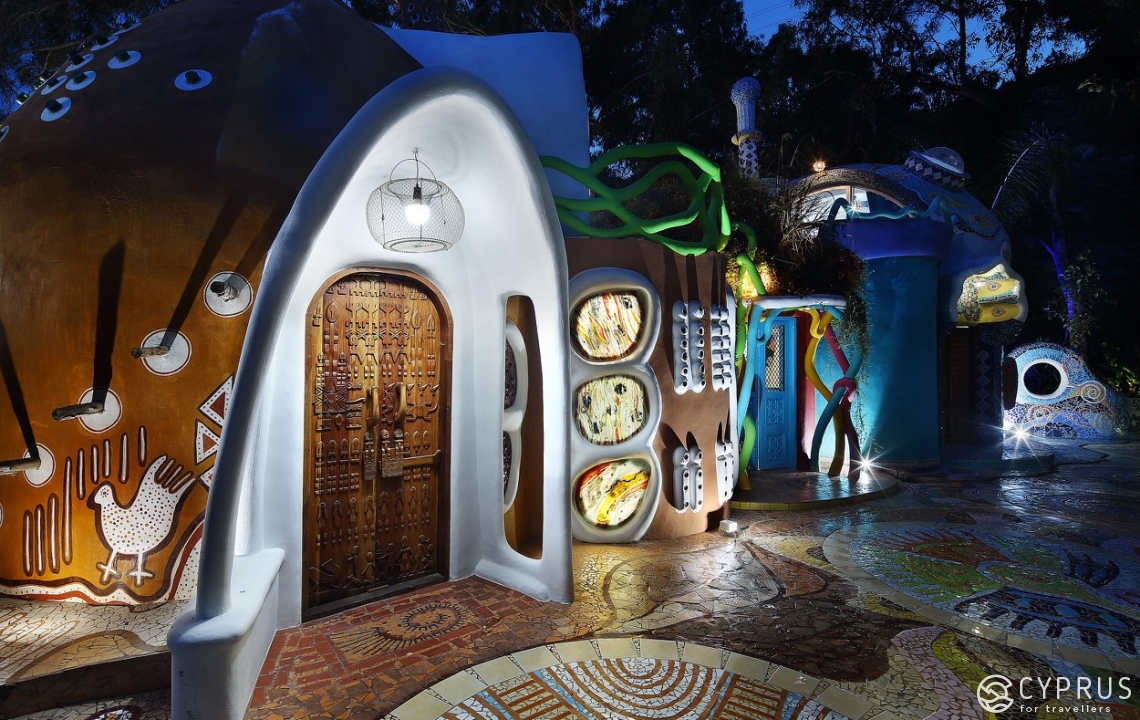
Meanwhile, the deep ocher-infused Color House, inspired by Colombia and South America as a whole, is not only the most spacious: it can house 4 people. Its interiors are simply a colour extravaganza of stained-glass windows encompassed in a glass arch!
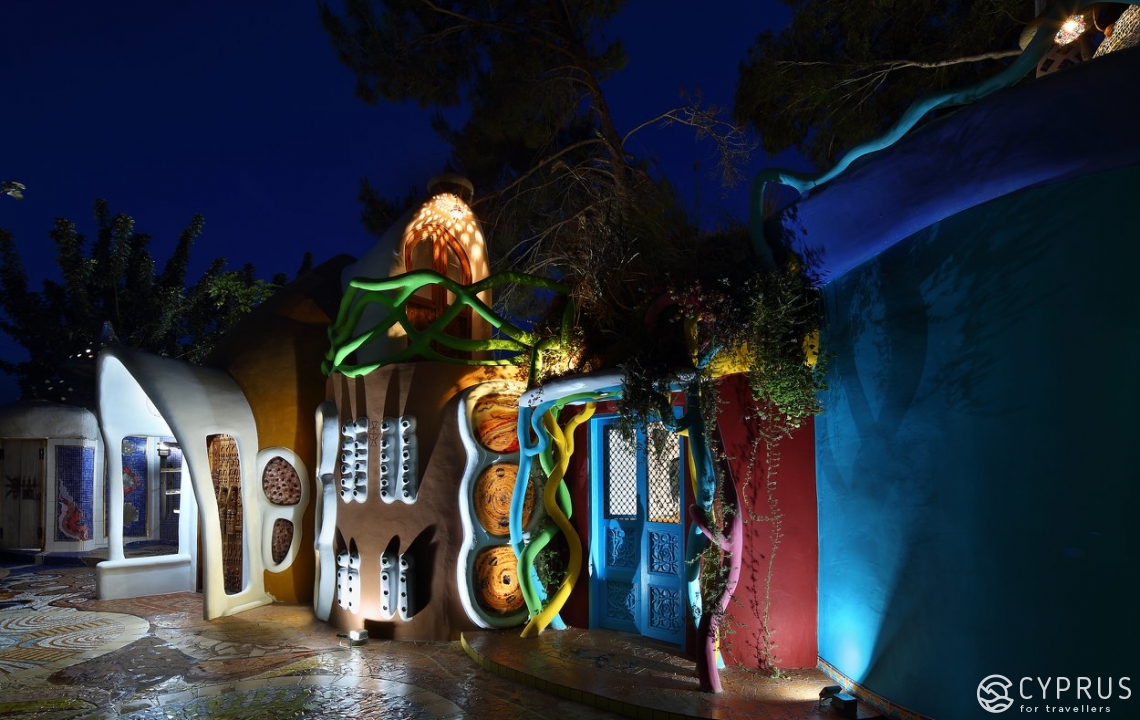
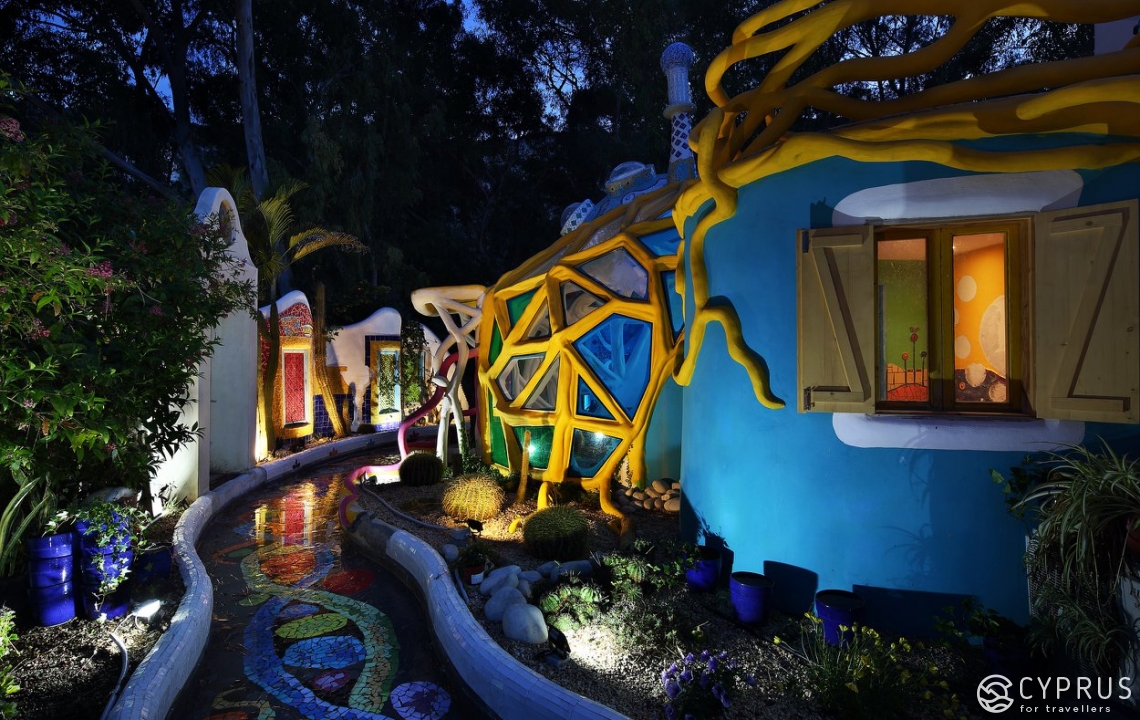
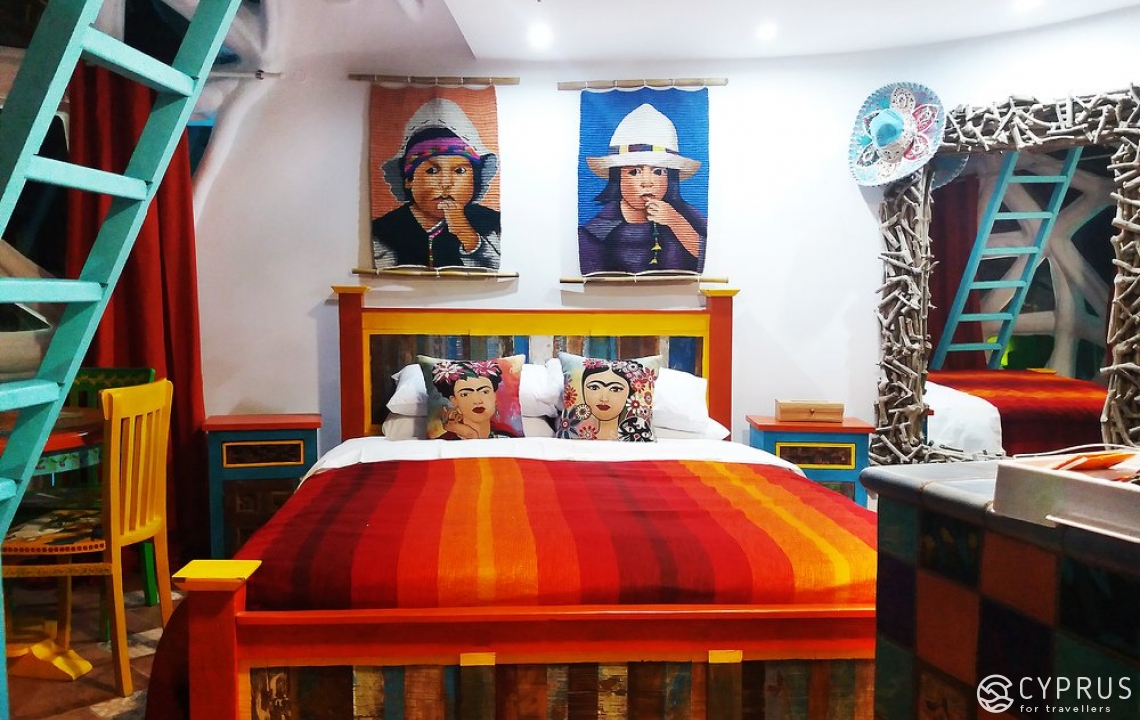

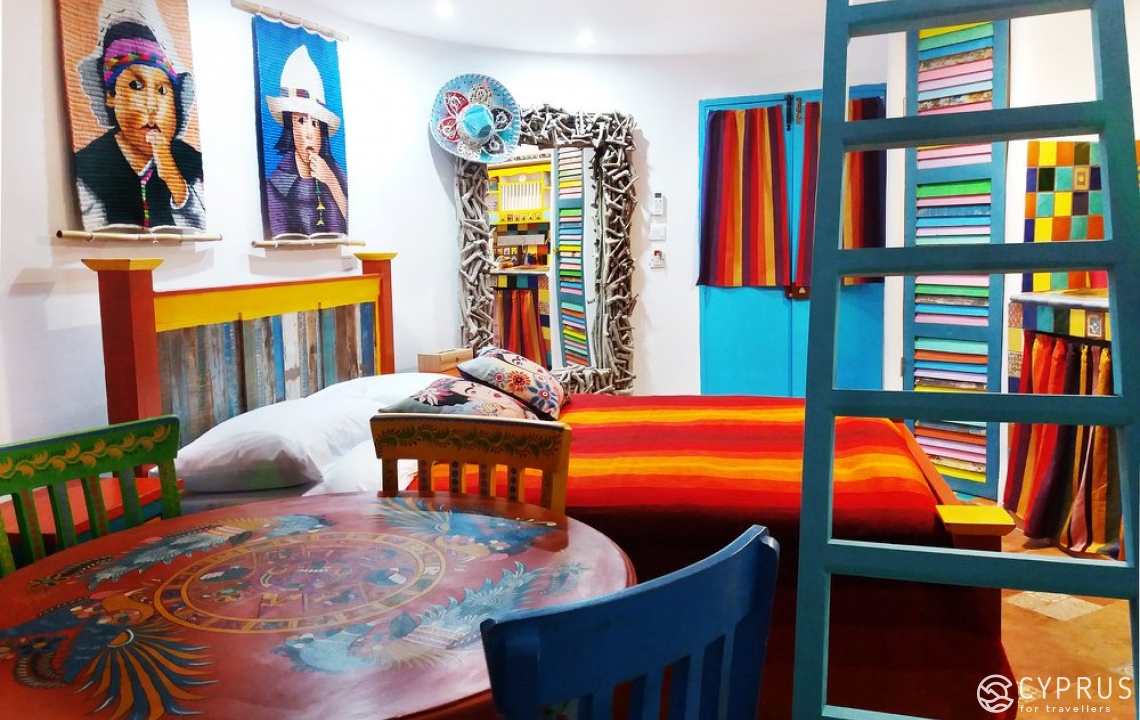
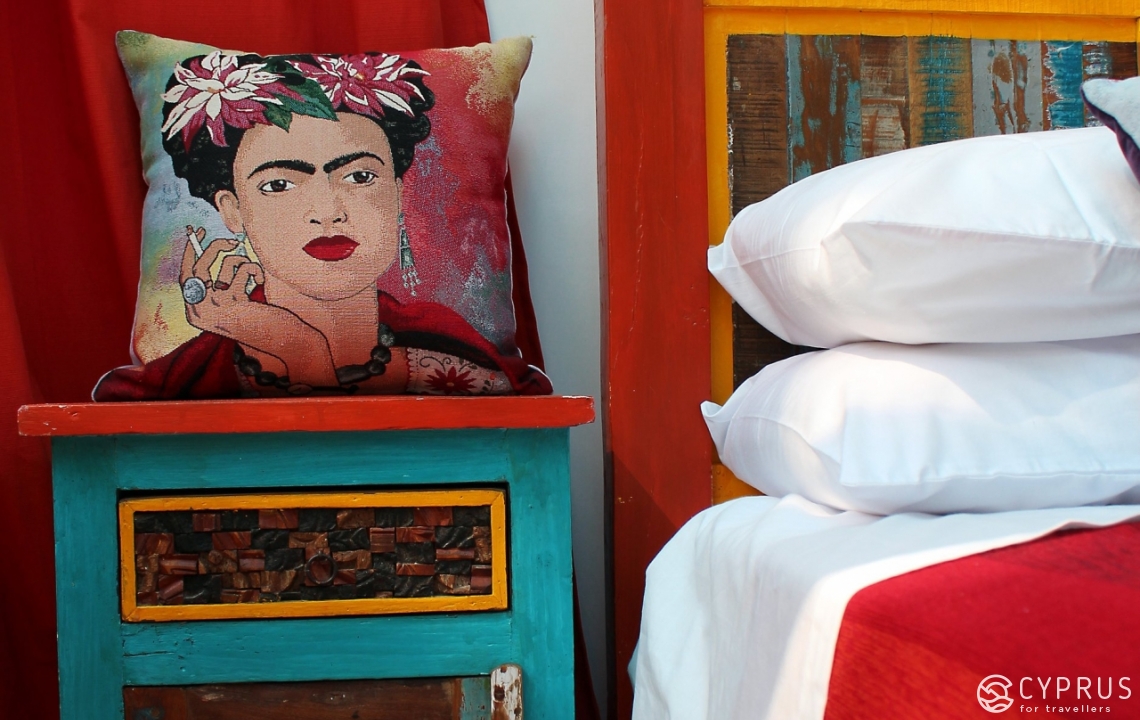
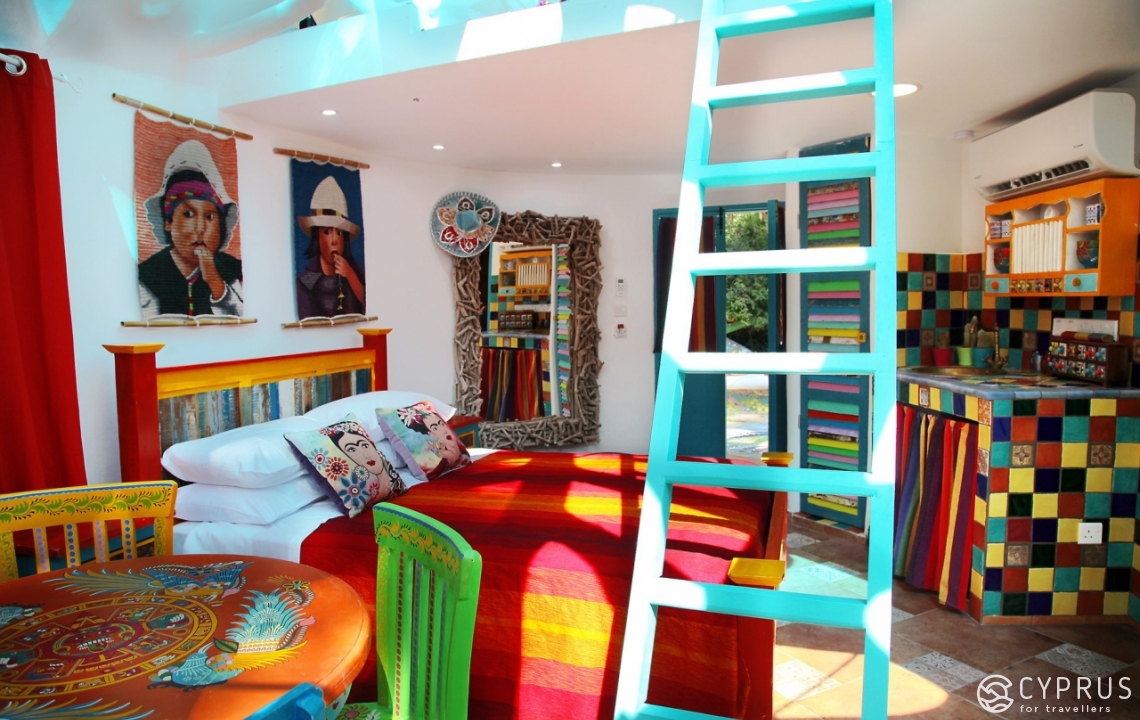
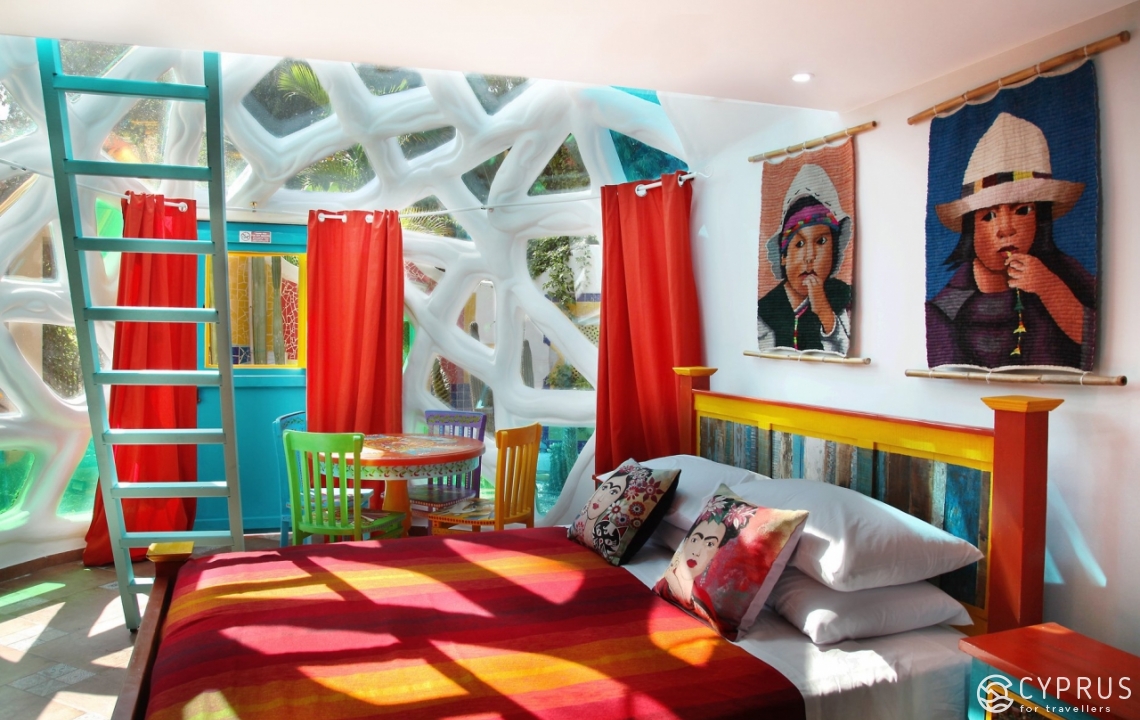
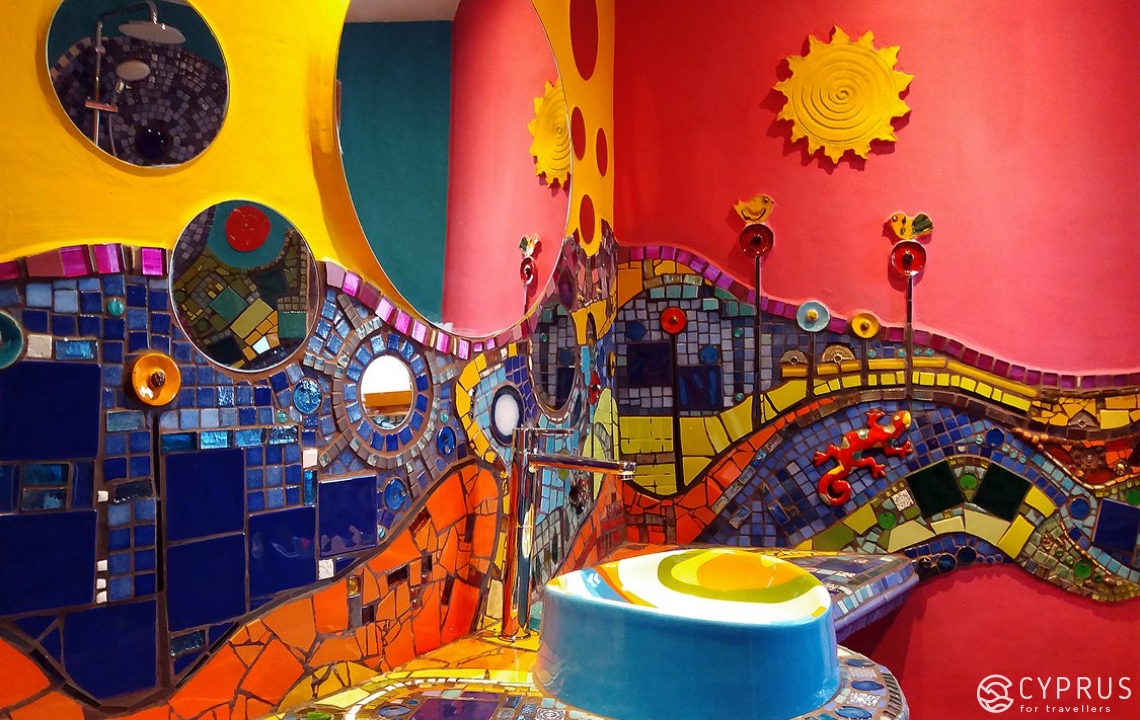
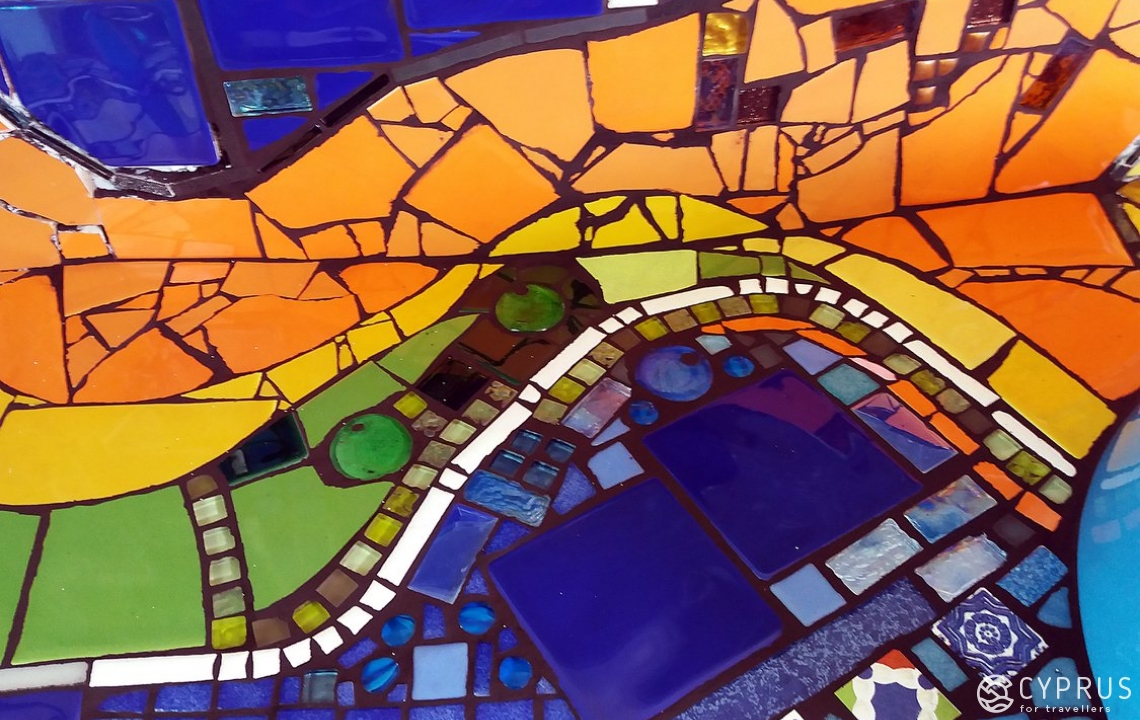
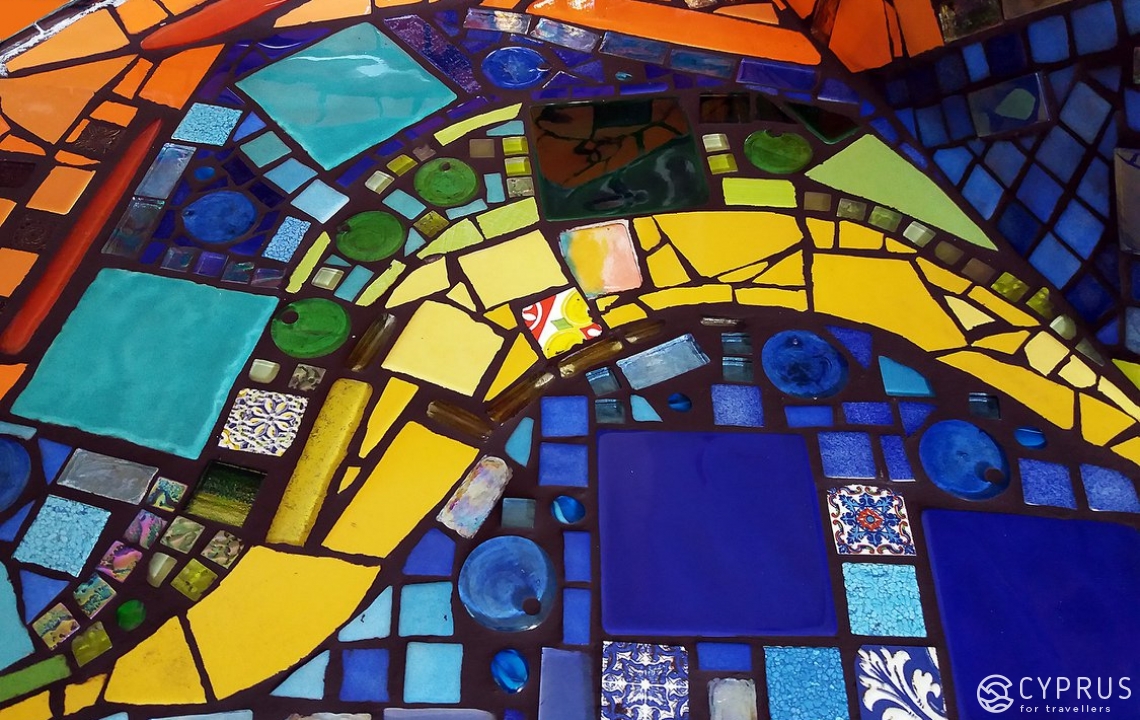
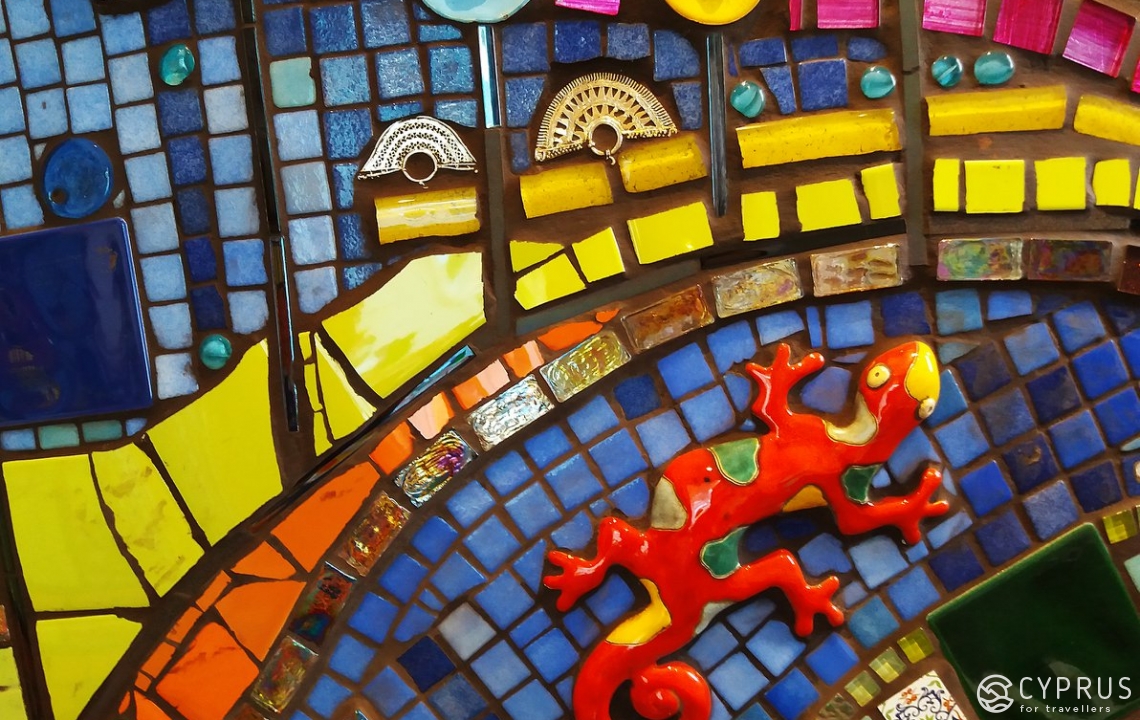
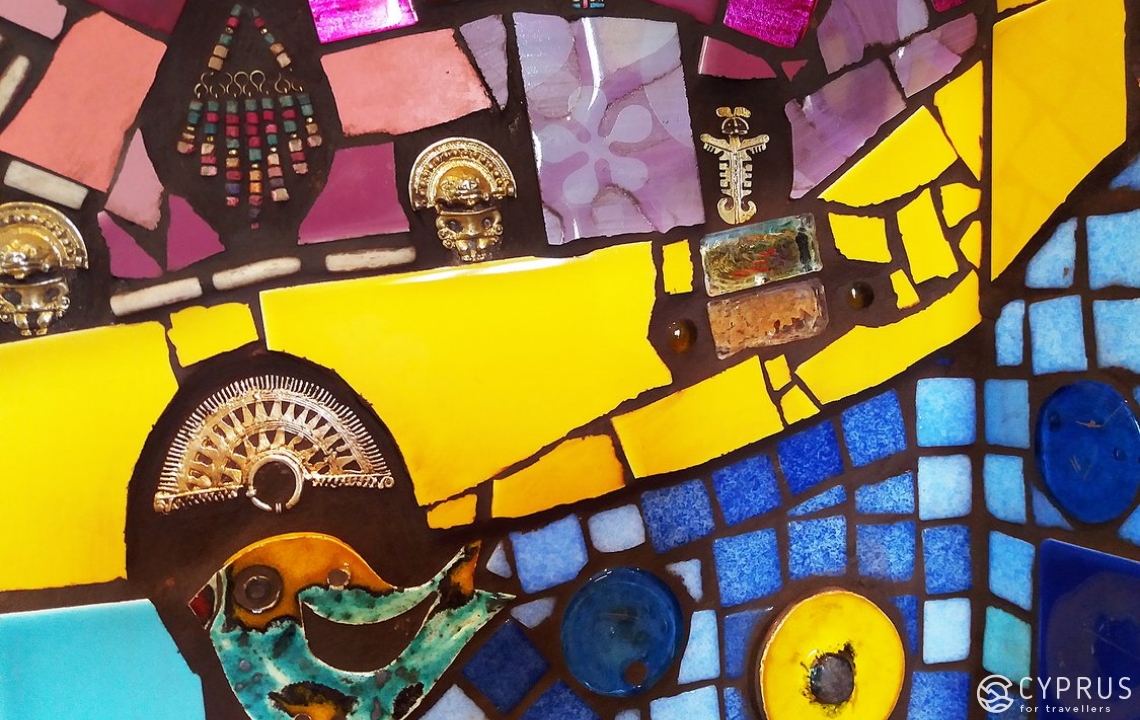
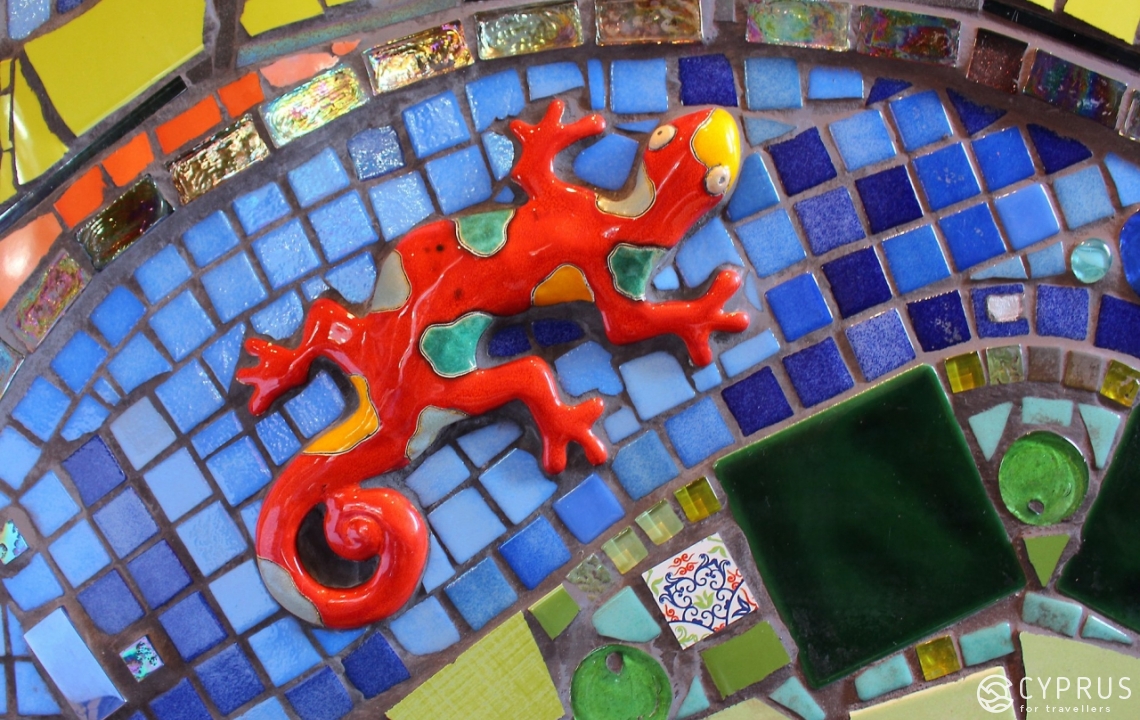
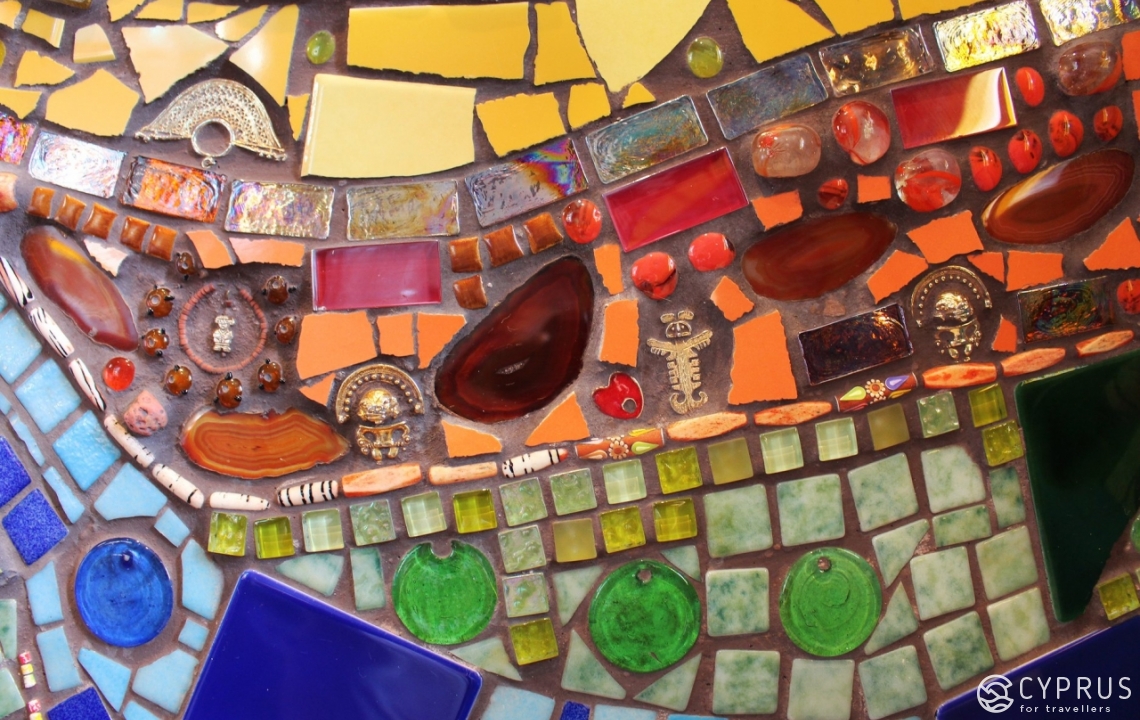
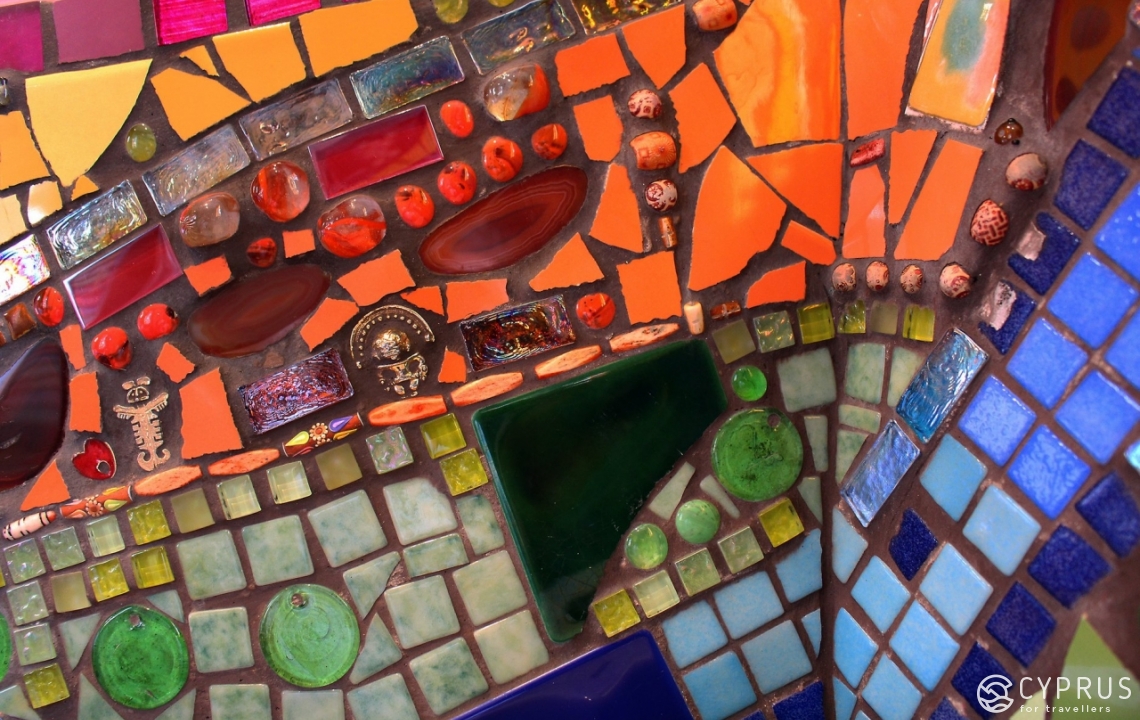
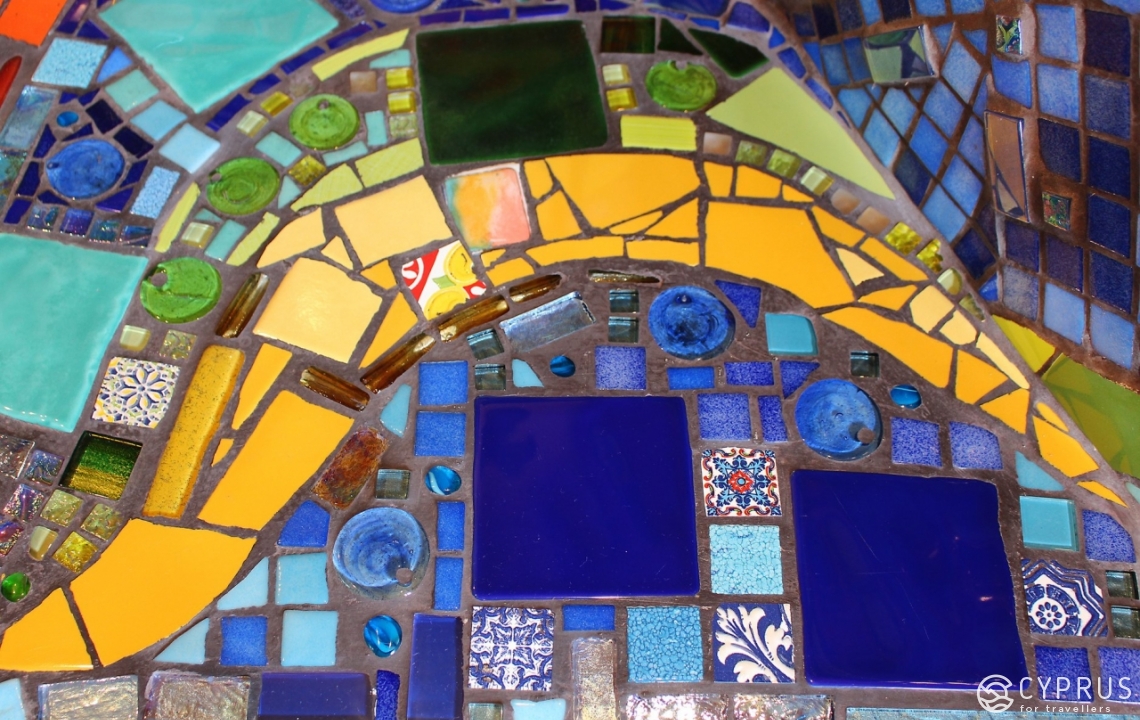
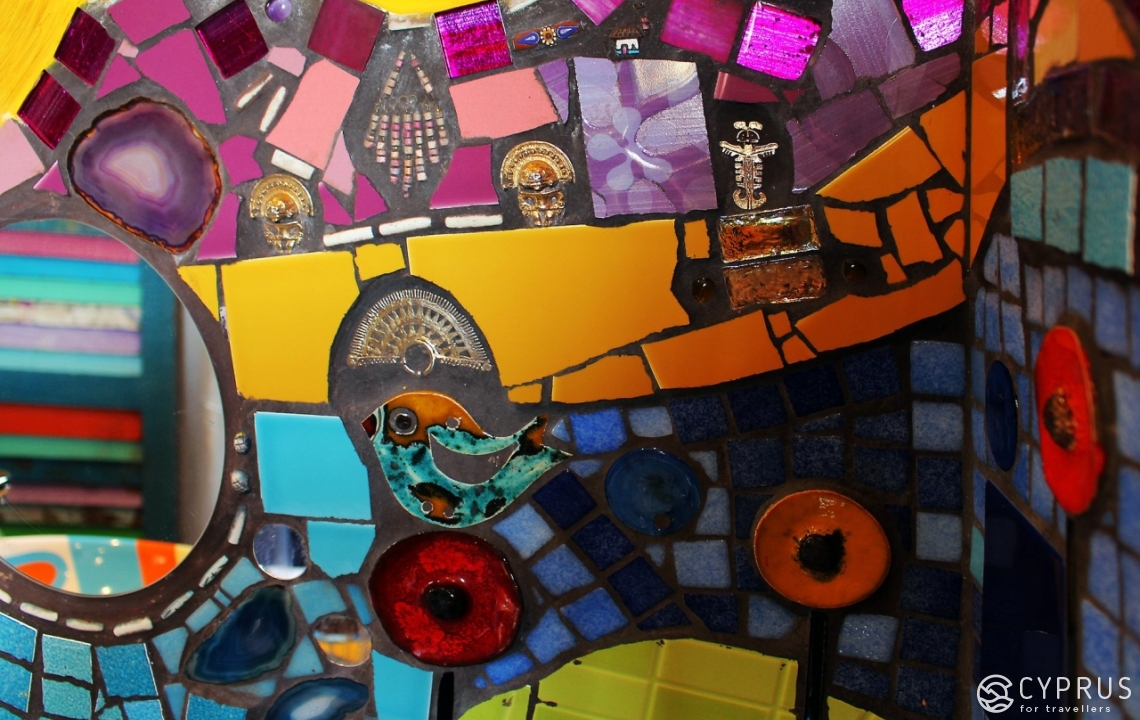
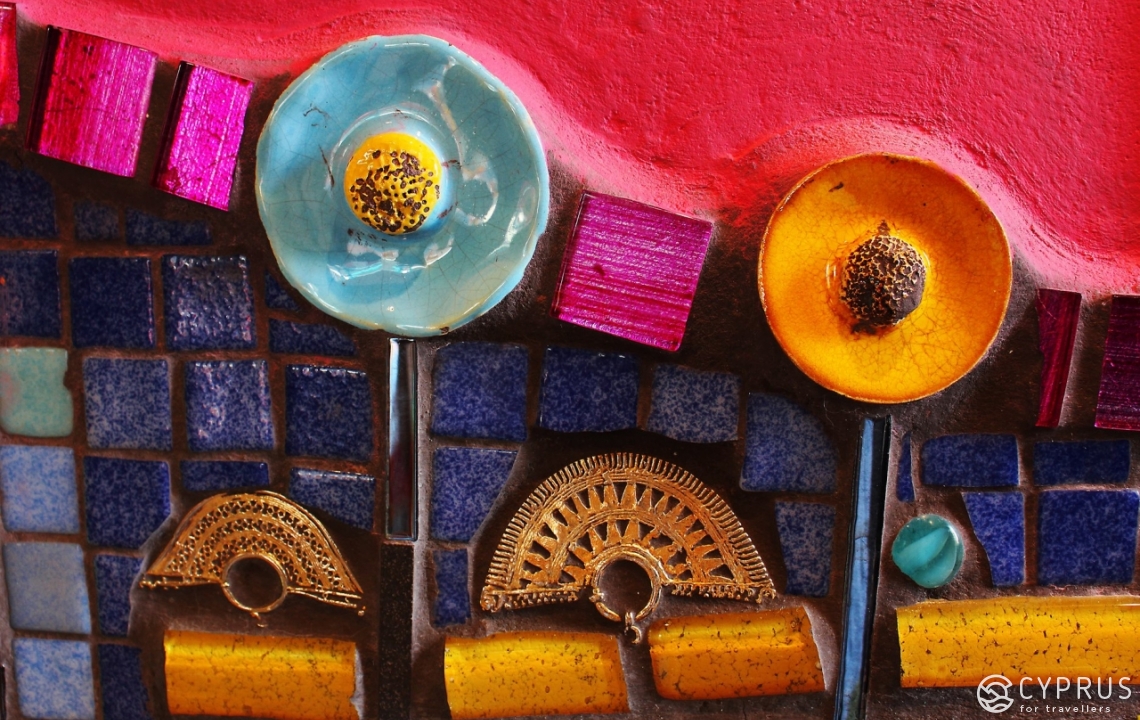
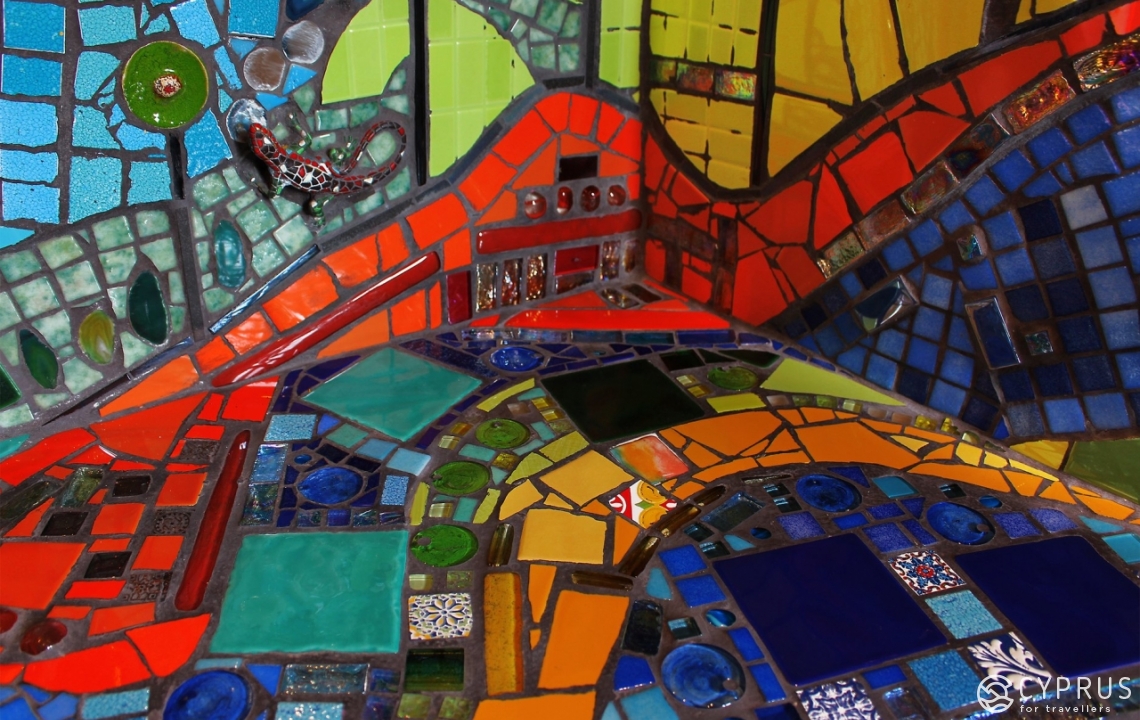
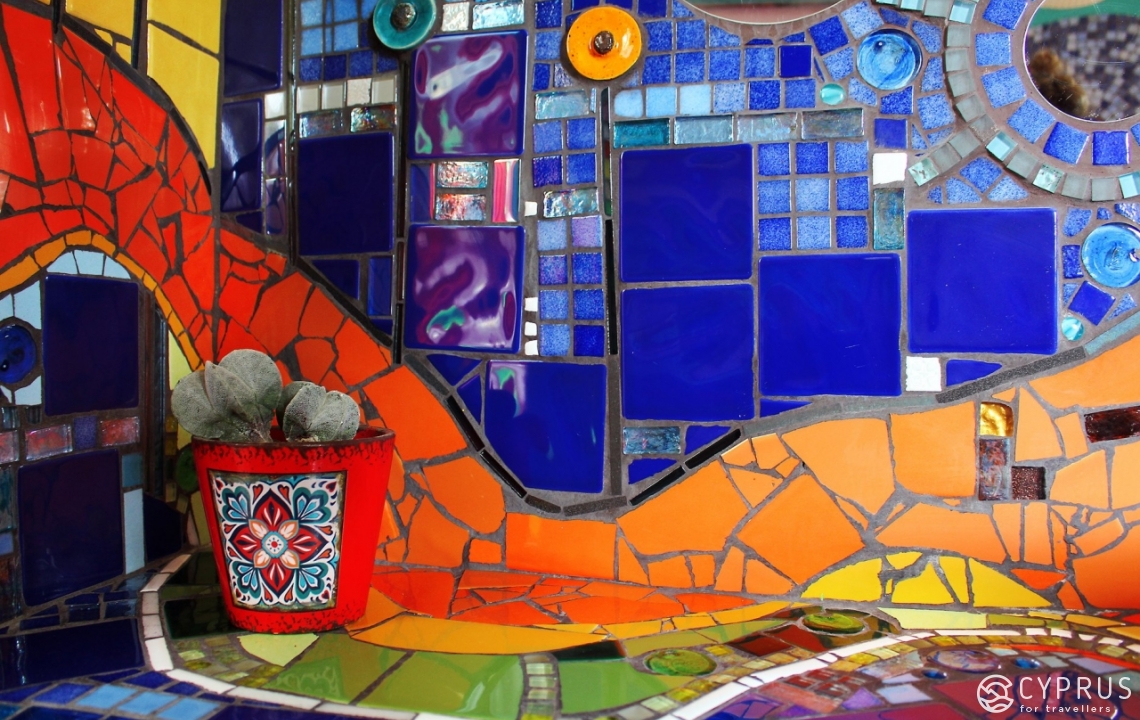
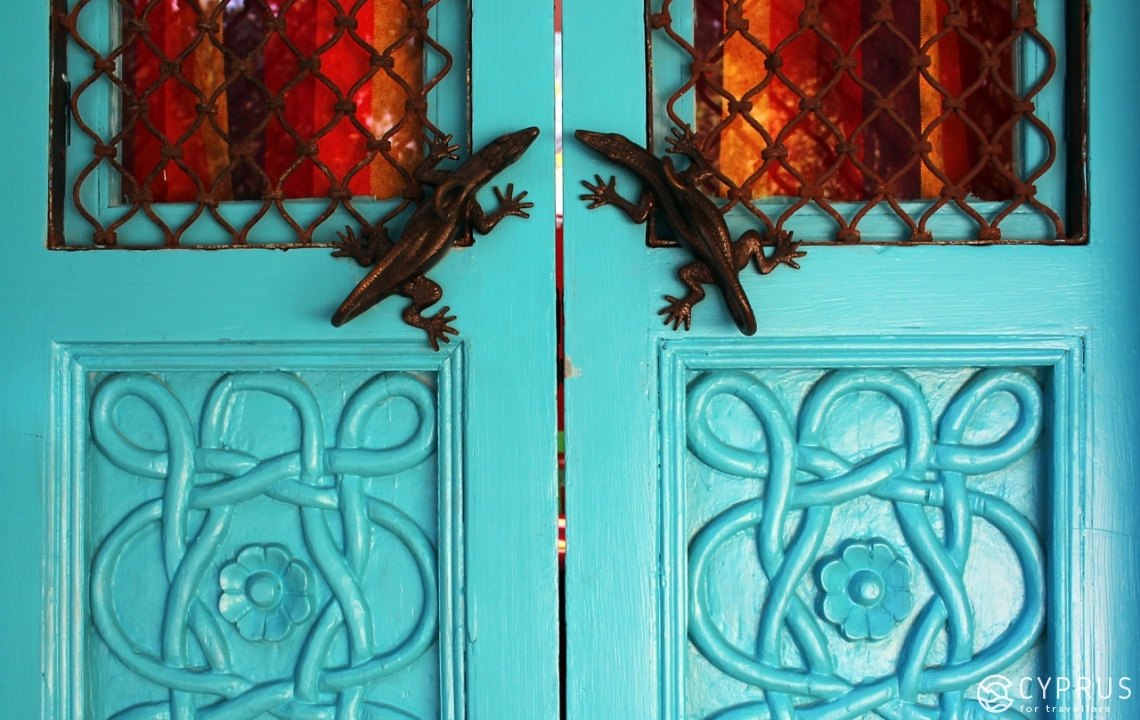
For those wishing to settle for a time in this “small country” named Euphoria, please bear in mind: only adults can rent cottages, as kids are not allowed. The cost for lodging includes breakfast, parking and other services (you can clarify this on the FB page).
At “Euphoria”, children haven’t fallen by the wayside: walking excursions take place here every Sunday, when from early morning till late evening, all visitors will not only be able to load up on unusual experiences and relax, but also obtain useful information about the natural surroundings and some of the species present on the park territory (for example, you could get up close to some black and white swans, peacocks and other inhabitants.
The excursions are conducted in several languages.
Lessons for juniors and teenagers have already been held for some time by Anton himself. He believes the most important thing in the educational process is the transfer of experience across generations, and that art — “this is what cultivates the development of culture and a collective mind in society” [5].
This autumn, “Euphoria Land” plans to hold several ecological evenings, so there’s good reason to expand your list of things to keep you entertained for the near future.
Contacts: (+357) 97743042, Facebook
Website: www.euphoriartland.comHow to get there: Vasilikon Street, No. 72-76, Limassol.
Until next time for more discoveries!
[1] It’s recommended to book seats in advance.
[2] The project was launched 6 years ago.
[3] A. Gaudi (1852-1926) — acknowledged as the greatest representative of Catalan modernism in architecture. The main body of his works he created in Barcelona, using combinations of elements from a mixture of styles, but with a particular proclivity for neo-Gothic and eastern construction techniques (the famous cathedral of Sagrada Familia, Park Güell and others).
[4] In one of the latest interviews with him, A. Miriantous stated that during construction of the project, he didn’t have the opportunity to continue travelling. However, he will soon voyage once again to unexplored lands on a quest for inspiration.

